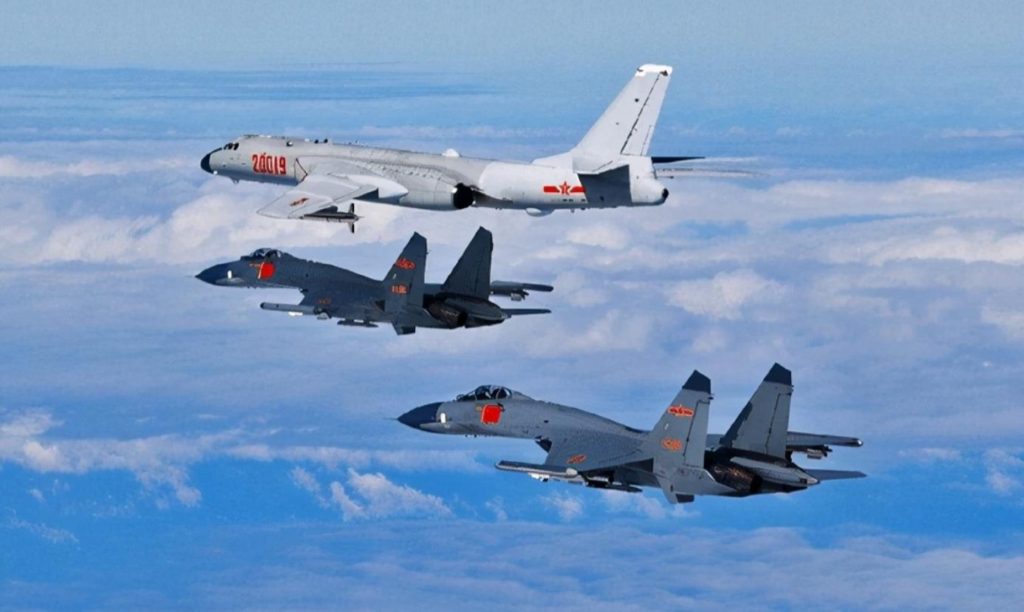The accusation of Xinjiang genocide is so ludicrous as to insult the intelligence of the audiences being preached to, yet highly placed scholars/politicians/scientists/journalists of the west would still echo every silly comment coming from State Department, or MI6, or that propaganda outfit in Mid-town Manhattan. -Oriental Voice
It is CLEAR that the United States want to “pull an Iraq WMD” excuse to invade / do battle with China. They are pushing, pushing and pushing about the “Xinjiang genocide”. And they are not going to stop, as they seem to have invested much in this avenue to attack China.
What am I talking about? HERE, and here…
Fury at UN human rights chief over ‘whitewash’ of Uyghur repression
Dozens of scholars have accused the UN human rights chief of having ignored or contradicted academic findings on abuses in Xinjiang with her statements on the region. In an open letter published this week, 39 academics from across Europe, the US and Australia called on Michelle Bachelet to release a long-awaited UN report on human rights abuses in China. The letter, published online, included some academics with whom Bachelet had consulted prior to her visit to Xinjiang. The letter’s signatories expressed gratitude for this, but said they were “deeply disturbed” by her official statement, delivered at a press conference in Guangzhou at the end of her six-day tour.
Set the tone for this article.
The Band! Need I say more?
Dilbert




China puts it’s foot down.
China will fight to prevent any effort to split Taiwan from China. Splitting is yet precisely defined. It would be at China's discretion. It could even mean the sale of offensive weapons to China's traitors. Xi Jinping has recently elevated the irritable antics of Japan to very high profile. It has defined the air surveillance zones including the Diaoyutai, and unfriendly entities will be fended off; China is holding high profile memoriam for Nanjing Massacre; China is explicitly pointing finger at Japan's emperor during WW2 as the number 1 war criminal, and ask for accountability. China will perpetuate these, and perhaps even increase the frequency. Afterall, there was 731 biolab issue and the 3-burn/kill/plunder war crimes yet to be addressed as yet. Take Russia's strategy: demilitarization; denazification, indemnification, on Japan!!! First Japan. Then Uncle Sam next. - Oriental Voice
Fresh Berry Cobbler
Don’t forget the ice cream.

Pssst, for an impressive dessert that guests will love and is simple to make, try our easy berry cobbler. It’s ready in a snap and tastes like summer. In our berry cobbler recipe, we love using Bisquick™ to achieve the perfect tender top layer. Top your warm Bisquick™ berry cobbler with whipped topping, homemade whipped cream—it’s super easy to make—or ice cream.

Steps
-
1Heat the oven to 425°F.
-
2In 2-quart saucepan, mix 1/2 cup sugar and cornstarch. Stir in raspberries, water and lemon juice. Heat to boiling over medium heat, stirring constantly. Continue boiling 1 minute, stirring constantly. Pour berry mixture into 8- or 9-inch (2 quart) glass baking dish.
-
3In medium bowl, stir Bisquick™ mix, milk, 1 tablespoon sugar and melted butter just until blended and a dough forms. Drop dough by 6 spoonfuls onto hot berry mixture.
-
4Bake about 15 minutes or until berry mixture is bubbly and topping is light brown.
-
5Place baking dish on a wire cooling rack. Cool slightly. Serve warm.
China draws security red line to US at defense ministers’ longer-than-expected first meeting
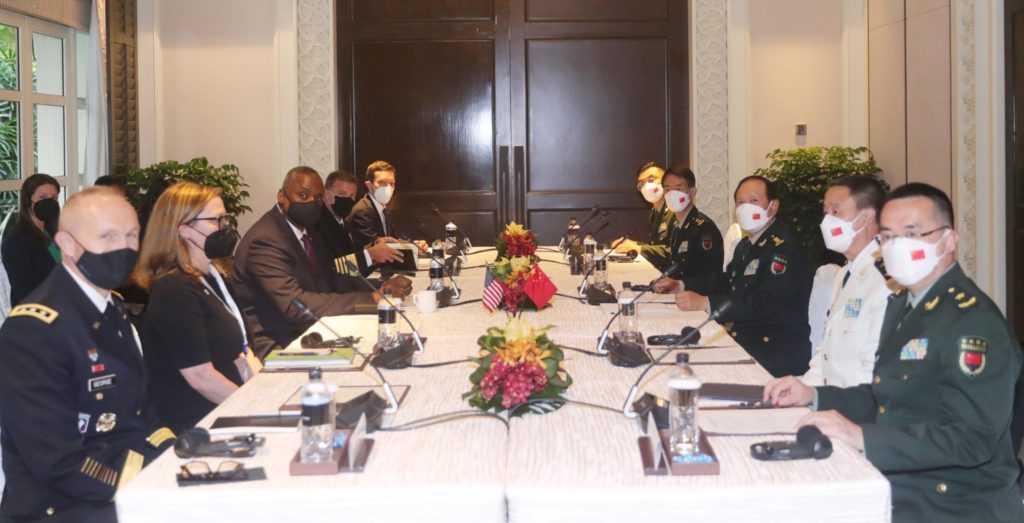
The Chinese military won’t hesitate to fight anyone who dares to separate the island of Taiwan from China, China’s State Councilor and Defense Minister Wei Fenghe told US Defense Secretary Lloyd Austin during their first meeting in Singapore at the International Institute for Strategic Studies’ (IISS) 19th Shangri-La Dialogue on Friday.
With the purpose to use Taiwan island and topics on the South China Sea to hype “China threat,” the US seeks to build an iron curtain between China and other Asian countries and to implement its “Indo-Pacific Strategy” by rallying allies, analysts said, noting that China is drawing a bottom line by reiterating its firm stance on the Taiwan question.
After being canceled for two years due to the COVID-19 pandemic, the IISS 19th Shangri-La Dialogue is taking place in Singapore from Friday to Sunday. The talks between Wei and Austin on Friday were the first meeting between Chinese and US defense ministers since Austin took office in January 2021.
Topics on the island of Taiwan, South China Sea, and the Ukraine crisis had been discussed at the defense ministers’ meeting.

There is only one China, and Taiwan is a sacred, inalienable part of China’s territory, Wei told Austin, noting that if anyone dares to separate Taiwan from China, the Chinese military will not hesitate to fight, and will resolutely crush any “Taiwan independence” attempts at all cost to firmly safeguard national sovereignty and territorial integrity, senior Colonel Wu Qian, a spokesperson at China’s Ministry of National Defense, said at a press conference after the meeting.
Austin reiterated to Wei that the US remains committed to its longstanding one-China policy, which is guided by the Taiwan Relations Act, the Three US-China Joint Communiqués, and the Six Assurances. However, he also “reaffirmed” opposition to “unilateral changes to the status quo,” according to a press release from the US Department of Defense.
The Chinese defense minister’s remarks stressed China’s bottom line for the US as Washington has ramped up efforts to link the Russia-Ukraine conflict with the Taiwan question and create tensions in the region, analysts said. They lashed out at the US for taking “a sausage cutting” strategy to hollow out its one-China policy gradually and intensify the situation at the Taiwan Straits.
Analysts said the US is attempting to shift its EU allies’ focus to the Asia-Pacific region and also consolidate its alliance in Asia.
Japan is the one that closely follows the US in using the current Russia-Ukraine crisis to hype the Chinese mainland’s “threat” to the island of Taiwan. Japanese Prime Minister Fumio Kishida used the Russia-Ukraine conflict as an example to oppose “unilateral changes” to the status quo by force and unveil a plan to raise Japan’s defense budget
The US and its allies have stepped up efforts to promote the implementation of the “Indo-Pacific Strategy” this year, as it is trying to build an iron curtain between China and others in the Asia-Pacific region, Yang Xiyu, a senior research fellow at the China Institute of International Studies, told the Global Times on Friday.
Yang said that the biggest difference in this year’s Shangri-La Dialogue is that the Asia-Pacific region is now facing an unprecedented strategic instability. The conflict between Russia and Ukraine has spilled over to the world. NATO is going global, and Western countries have deliberately added fuel to the fire by linking Ukraine with Taiwan, which are irrelevant.
The US had built QUAD, AUKUS, and the Indo-Pacific Economic Framework, but China decided to confidently face them or integrate into them, Yang said, pointing out that China’s choice to send its top defense official this year at this sensitive time shows China’s confidence and strategic focus, as well as China’s strategic sincerity of pushing the Asia-Pacific to integration and cooperation standing at the crossroads.
Frank exchangesWei and Austin’s meeting on Friday is of significance to implementing the important consensus between the two countries’ top leaders and pushing forward the development of the two countries’ military ties, said Senior Colonel Wu, noting the conversation was a frank, positive and constructive strategic communication.
Both sides agreed that the two militaries should carefully implement the key consensus reached by the two countries’ top leaders, keep frequent communication and manage risks and crises, Wu noted.
The meeting between Chinese and US defense ministers is an exchange of views at this historic moment, as China pushes the region toward integration and cooperation and away from separation and Cold War, Yang said.
The significance of the meeting is that it proved the two countries’ high-level conversation is sustainable. Even if the two sides crossed swords with words, being able to exchange views in a frank manner means both sides are willing to implement the consensus reached by the two countries’ top leaders, Yang said.
The conversation between the Chinese and US defense ministers has a positive meaning to the deepening of strategic communication, the exploration in the construction of a “guardrail” for China-US relations, as well as the management of risk, Cao Yanzhong, a research fellow at the Academy of Military Sciences of the Chinese People’s Liberation Army (PLA), told the Global Times on Friday.
When it comes to the “guardrail” for China-US relations the US wants to build, China has already drawn three bottom lines the US should not cross during the two countries’ meetings in Anchorage and Tianjin. The US should keep its promises, stop making provocations on the Taiwan question, stop expanding and enhancing military alliances and partnerships in its attempt to “shape security environment of China,” and stop trade sanctions and technology blockades, and take real actions to stabilize China-US relations and promote peace, Cao said.
However, as the US insists on defining the bilateral relations with major power competition, there are two options for such competition to evolve: it can escalate to conflict, or it can pave the way for cooperation, Zhang Yingli, former professor at the International College of Defense Studies at the PLA’s National Defense University, told the Global Times on Friday.
The US military frequently carries out close-in reconnaissance and make provocations on China, and China’s frontline troops have garnered rich experience and skills as they deal with them. This means Chinese troops can carry out their duties in safeguarding national sovereignty very professionally and avoid possible accidents that could lead to crises from happening as much as possible, Zhang said.
Analysts noted the US should also immediately stop arms sales to and military cooperation with the island of Taiwan, stop the highly frequent close-in reconnaissance on China as well as stop stirring up regional confrontation and security tensions in the Indo-Pacific region.
How this is reported in the West...
FLASH: China Tells U.S. “Will not Hesitate to Start a War”
FLASH– 7:31 PM EDT Friday, June 10, 2022 — The Defense Ministry of the People’s Republic of China told their U.S. counterparts this evening “Beijing will not hesitate to start a war over Taiwan.”
They used those exact words.
Developing . . .
Neocons warn American leadership that you cannot take what China says at “face value”
“The US doesn’t have to believe anything China says, but it doesn’t have to pick a fight with China either.”
From HERE
Dilbert

.
NEWS ALERT! China Will Not Hesitate To Start A War If US Does Not Follow One-China Policy — Beijing
Ah. For those of you who have not been paying attention. -MM
China will not hesitate to start a war if Taiwan is pulled away from China, Chinese Defense Ministry Spokesperson Wu Qian said on Friday.
“If anyone dares to rip Taiwan away from our country, the People’s Liberation Army of China will not hesitate to start a war,” Wu Qian was quoted by the CCTV as saying after a meeting between Defense Minister Wei Fenghe and his US counterpart Lloyd Austin in Singapore.
“We will firmly defend our country’s sovereignty and territorial integrity.”
Meanwhile, Austin and Wei discussed the need to responsibly manage competition and maintain open lines of communication, the Pentagon said.
“Secretary of Defense Lloyd J. Austin III met today with the People’s Republic of China’s (PRC) Minister of National Defense General Wei Fenghe on the margins of the Shangri-La Dialogue in Singapore. Secretary Austin and General Wei discussed US-PRC defense relations and regional security issues,” the statement said.
According to the Pentagon, Austin focused on “the need to responsibly manage competition and maintain open lines of communication.”
“The Secretary underscored the importance of the People’s Liberation Army engaging in substantive dialogue on improving crisis communications and reducing strategic risk,” it added.
The two also discussed North Korea and the Russia-Ukraine crisis. During the talks, the Pentagon chief reaffirmed US commitment to “our longstanding One-China policy,” according to the statement.
The meeting was the first in-person meeting between Austin and Wei, who last spoke with each other over the phone on April 20, which was itself the first such call since the Biden administration took office.
China, last month, in response to a US congressional delegation visit to Taiwan, sent 30 warplanes near the island and urged the US to avoid sending signals of Taiwanese independence.
The Shangri-La Dialogue is an annual event designed to allow heads of state and top defense officials to meet in person to discuss security challenges. The event did not take place in 2020 and 2021 due to the COVID-19 pandemic.
Urban Exploration Photographer Reveals Abandoned Ferrari & MG Sports Car. Bonus: Lamborghini Diablo Goat Edition
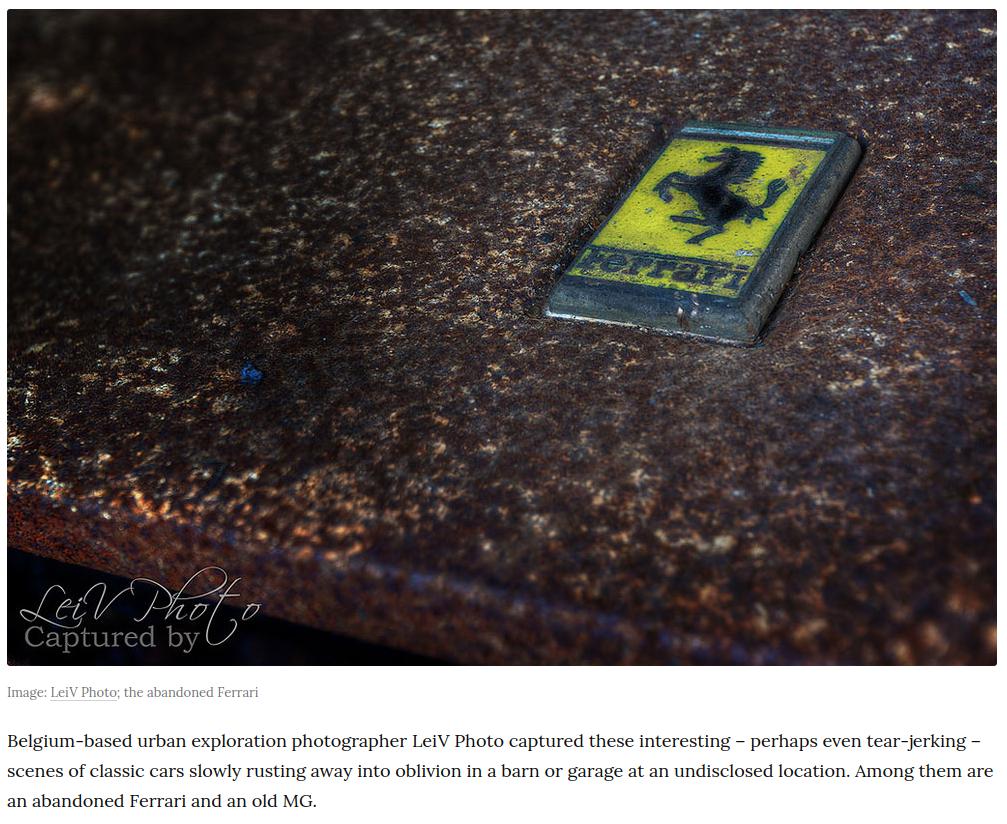
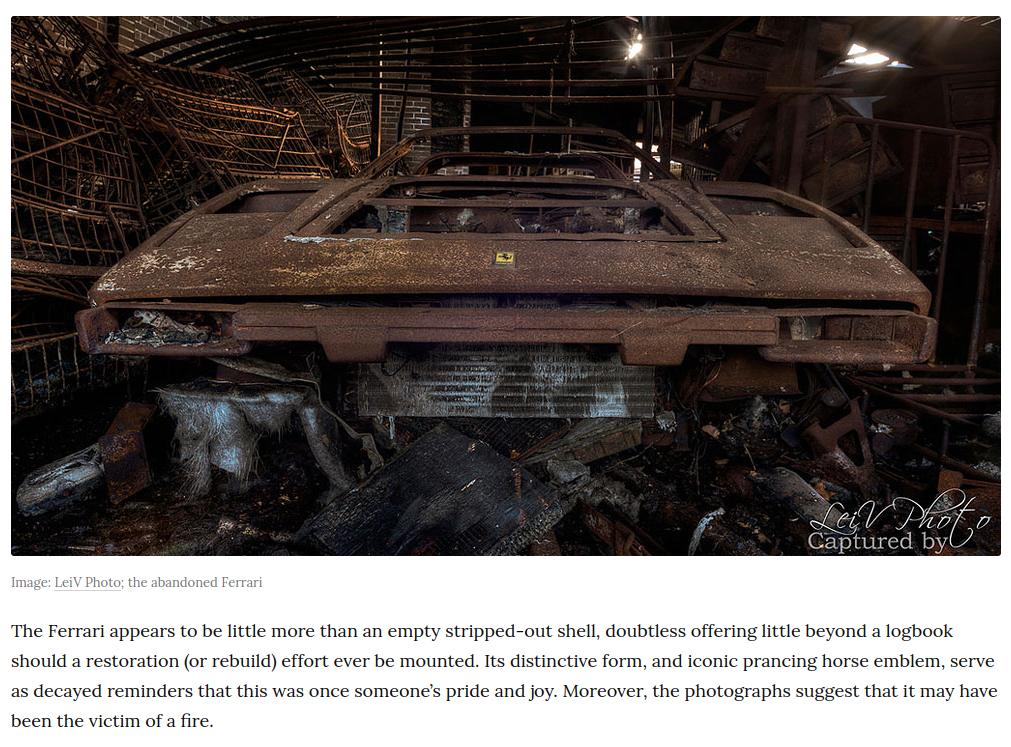

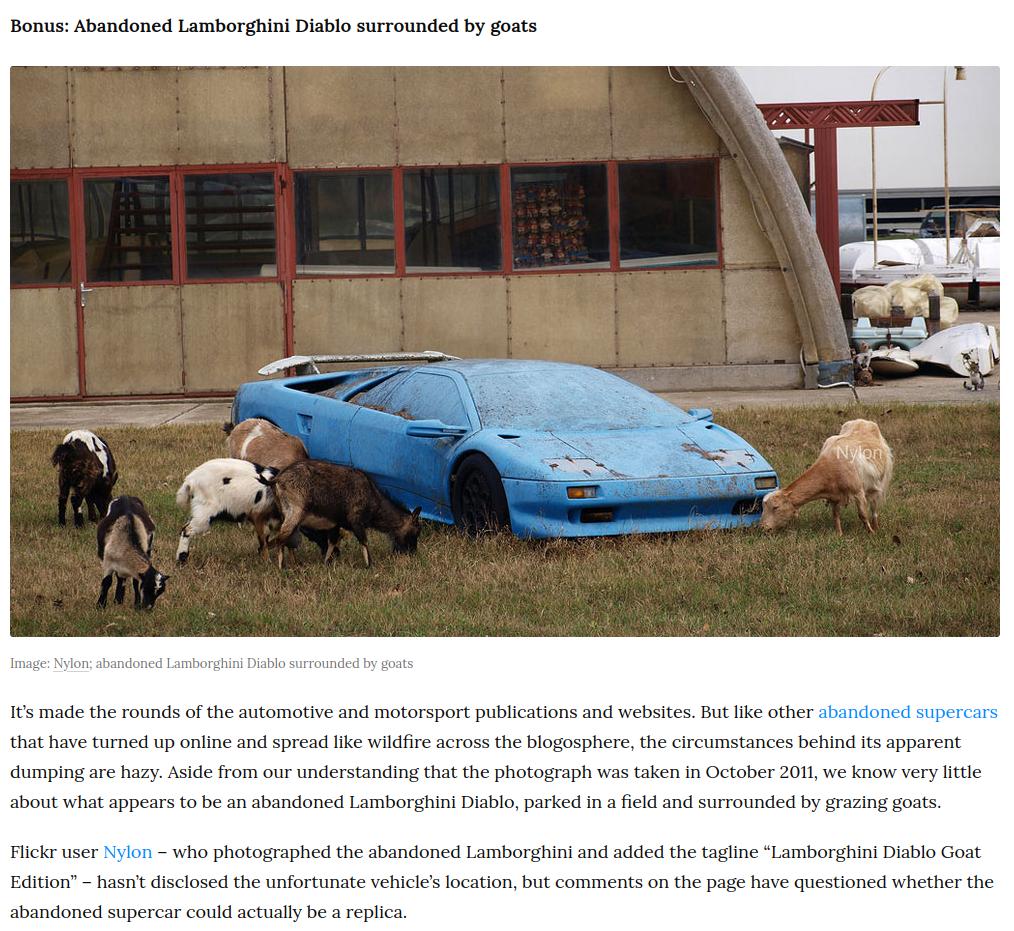
Dibert

- Written by Caren Black | TEOLAWKI Times
- “Color revolution” is a rather perky term denoting a bloody, divisive and destructive manufactured effort to crack open, for easy exploitation, any existing democratically elected government insufficiently obedient to the US-led West. Idealistic and unwitting youth, recruited into the cult of Gene Sharp, trained by the progeny of Otpor (tell-tale fist symbol, below), and convinced that their “movement” can change the world for the better, show up in the hundreds and thousands for packaged events, wearing the requisite colors and carrying the pre-printed signs.
The people Hollywood hires for staged crowd scenes are called “Extras” for a reason. Indeed, it’s the black-clad provocateurs – funded, trained, equipped and armed by the US – who set the scene, place the props and direct the action for the ubiquitous cameras as well as perpetrate the off-camera death and destruction. Whether “on-stage” or “backstage”, these mercenary provocateurs explosively aim at both “sides” in the “conflict” which they themselves have created, stoking it to the maximum.
Color revolutions became the West’s weapon of choice in the late ’80s, gaining intensity after 2000. (Think “Arab Spring”.) One of the most famous is brought back yearly into the melded minds of the masses as a “massacre” (the West’s term). Let’s call it the Red Color Revolution. This effort to tear a nation and its people’s lives apart, or at the very least to cast aspersions on them, is known in Western media as “The Tiananmen Square Massacre,” a term bringing instant “recognition” to millions of manipulated minds imbued with a memory of everything that never actually happened.
Shortly after the 2014, $5 billion US color revolution in Ukraine (They’d “colored” democratically elected Yanukovich in 2004, as well, but he was later re-elected.) we re-posted information about this obvious example. Tiki torches? Nazi symbols? The US Assistant Secretary of State handing out cookies in the Maidan square, plus her phone conversation with the US Ambassador to Ukraine, leaked and posted to YouTube? All this should qualify as “obvious” or at least highly suspicious.
Propaganda dissolves reality. This is a problem since only reality-based knowledge can support resilience. And, recognizing propaganda requires work. Therefore, we expend a good deal of effort on this site, as we did formerly with interns, helping others and ourselves improve our propaganda sensors.
Obviously, we don’t always succeed.
After our 2014 Ukraine posts, we received an indignant email from a former intern claiming we were spreading “wild tales”. He knew what happened because he’d seen it on TV.
He’d no doubt also seen Mary Poppins flying with the aid of an umbrella on TV. “The News” is assumed to be somehow different from the rest of television. On The News, people tell us the truth. They tell us what we “need to know”. If we can’t rely on this trusted resource, what then can we lean on? This dependence makes the propaganda exponentially more effective, the viewer more easily manipulated.
Truth & Resilience
Manipulation is constant in the 2020s, making it vital to continually build our awareness of all that seems “too pat”, overly convenient, suspiciously profitable, lacking basic logic. Our readers have all learned to discern the patterns. But, what about the memories made before we knew what to watch for? Jeff Brown, one of our Special Edition experts, describes his own such experience regarding the Tiananmen lies.
Manipulation through diversion toward an incorrect focus and conflation of two separate events or their outcomes both occurred during the “Red Revolution”. Larry Romanoff explains. Finally, Dennis Etler’s article deals with people who are not what they seem to be on the surface, leading to events of the same character.
China’s leadership realized they were being set up, and the “Red Revolution” failed. But, it caused hideous death to those who tried to keep the peace. It caused China’s leaders to be more on guard. It succeeded in smearing China, at least in the Western mind, where the lie lives and continues to help the violent injure the peaceful. Lies do that. This Special Edition is our effort to promote resilience at the expense of propaganda and help push back against the Tiananmen Lie. Thanks for reading.
A comment
Marie-Antoinette, 1770: "Let them eat cake!" Von der Leyen, 2022: "Let them drive electric!" -Passerby
CIA spycraft

Developed by CIA’s Office of Research and Development in the 1970s, this micro Unmanned Aerial Vehicle (UAV) was the first flight of an insect-sized aerial vehicle (Insectothopter). It was an initiative to explore the concept of intelligence collection by miniaturized platforms. (Photo by Central Intelligence Agency)
Dilbert

US Navy aircraft carriers may be useless in a war with China
“The days of the carrier on the modern battlefield may be numbered.”
Aircraft carriers such as the $13 billion USS Gerald R. Ford are floating symbols of the United States’ military power. They are built to dissuade adversaries from attacking American interests, reassure allies in times of crisis, and provide lifesaving close air support to U.S. troops in combat.
Yet these capital ships are also large and tempting targets for anti-ship missiles. Now China, which has missiles that can strike ships up to 2,500 miles away, has reportedly found a way to track U.S. aircraft carriers in real-time.
Last June, a Chinese satellite equipped with artificial intelligence detected the aircraft carrier USS Harry S. Truman during naval exercises off the coast of Long Island, New York, allowing China’s military to follow the ship’s movements, The South China Morning Post first revealed.
Task & Purpose has not independently verified the claim made by Chinese space scientists that they had spotted the Harry S. Truman. The Navy referred questions about the possible implications of this claim to the Pentagon, which did not provide a comment for this story.
If this reporting is accurate, it could indicate the Navy would be unable to dispatch aircraft carriers to Taiwan in response to a Chinese invasion, said Timothy Heath, a senior international defense researcher at the RAND Corporation, a nonprofit research organization.
“Given China’s long-range anti-ship ballistic missiles, the only hope that a U.S. carrier has for surviving a battle near Taiwan is to hide from Chinese sensors,” Heath told Task & Purpose. “If this report is true, then the carriers’ last defense against anti-ship ballistic missiles is now gone. The carrier can be found, identified, and tracked, and that data undoubtedly can be passed to Chinese targeteers who could then target the warship.”
In the past, Chinese analysts have had to pore over a massive number of satellite images to locate U.S. aircraft carriers, Heath said. By using artificial intelligence, the Chinese military could greatly accelerate that process.
Even if this particular story about how China tracked the Harry S. Truman turns out not to be true, military analysts have long expected that artificial intelligence would make it much easier for China and other adversaries to sift through satellite images and identify targets, he said.
“I think there is an understanding that the future battlefield is going to be highly transparent in the sense that the proliferation of satellites and AI [artificial intelligence] will make it increasingly difficult for major combatant ships like a carrier to hide. In fact, it’s almost a given that the days of the carrier on the modern battlefield may be numbered.”
China already has a variety of ground-based radars, airborne sensors, and satellites that have made U.S. military planners apprehensive about sending aircraft carriers anywhere near Taiwan, Heath said.
“The military officers I’ve talked to said they have been planning for years to deploy carriers so far away from Taiwan that they’re out of range of the [Chinese] missiles, but frankly, also irrelevant to the combat,” Heath said. “The bottom line is if the U.S. is relying on carriers to save Taiwan, that’s a lost cause. It’s just not viable.”
Retired Navy. Capt. Jerry Hendrix said he has been worried about how U.S. aircraft carriers can be detected from space. Hendrix is a Navy expert who spent 26 years on active duty, during which he served on aircraft carriers and as a strategist on the Chief of Naval Operations staff.
Hendrix recounted to Task & Purpose how he read a news story years ago about an astronaut who spotted his former carrier while he was serving on a space station. From far above the Earth, the astronaut was still able to see the ship’s hull number through one of the station’s telescopes.
“It occurred to me that if a human astronaut in the space station was able to do this, that it probably is not that hard to look for aircraft carriers,” Hendrix said.
Indeed, there are not that many ships in the world that are as large, as fast, or that displace as much water as U.S. aircraft carriers, so Chinese satellites have plenty of clues to look for, Hendrix said. Even though super tankers are larger than aircraft carriers, they do not turn into the wind to launch aircraft.
“If you’re programming in through AI-specific attributes of an aircraft carrier that an aircraft carrier would do but a merchant ship of a similar size would not, then you’re able to make that detection from overhead imagery more quickly,” Hendrix said.
Artificial intelligence would also allow Chinese satellites to quickly distinguish an aircraft carrier’s electronic signature from background noise on the electromagnetic spectrum, he said.
To keep aircraft carriers relevant in future wars, the Navy needs to invest in carrier-based aircraft that can fly much further without refueling than F-35C Joint Strike Fighters, Hendrix said.
Hendrix said he estimates the F-35C can fly up to 650 nautical miles before it needs to be refueled. While the Navy is developing the MQ-25 drone to refuel carrier-based aircraft, not enough of those drones will be on individual aircraft carriers to refuel a lot of F-35Cs for a large strike, he said.
The Navy really needs an unmanned combat aircraft, Hendrix said. The service had been developing such a drone, the X-47B, but decided to move forward with the MQ-25 program first.
There’s no doubt that threats against aircraft carriers are growing, but it’s also worth noting that experts have been writing the aircraft carrier’s obituary for a century. Indeed, the U.S. Naval Institute has compiled a list of articles from its “Proceedings” magazine going back to 1922 that debate the carrier’s worth.
One naysayer argued in 1925 that the Navy should use large dirigibles instead of ships to carry aircraft because airships can fly over both sea and land. A 1959 commentary questioned whether the Navy would get better use out of its money if it built more submarines instead of carrier strike groups. And one author wrote in 1999 that the cruise missile attacks on Al Qaeda in Sudan and Afghanistan the previous year marked the beginning of the end for aircraft carriers.
“As we enter the new millennium it will become more and more obvious, however, that technology that earlier favored the aircraft carrier will dictate its demise,” wrote the author, whose name was not included in the USNI list.
Retired Navy Capt. Brent Sadler said he does not believe the U.S. Navy’s aircraft carriers are so vulnerable to detection that they could not take part in a military response to a Chinese invasion of Taiwan.
“These Chinese kill chains are long and carrier strike groups are hard targets,” said Sadler, the senior fellow for naval warfare and advanced technology at the conservative Heritage Foundation think tank in Washington, D.C. “They can and will operate within threat ranges.”
In other words: Just because Chinese satellites detect U.S. aircraft carriers does not mean that the Chinese military can get the ships’ location in time to successfully hit them with missiles.
In 1981, the U.S. Navy exercise Ocean Venture demonstrated that American aircraft carriers could avoid being detected by Soviet satellites, thus disproving that the carriers had to stay far away from Soviet territory to survive, said Sadler, the senior fellow for naval warfare and advanced technology at the conservative Heritage Foundation think tank in Washington, D.C.
“Same is true today, but we just have not really demonstrated this in a way like Ocean Venture did,” Sadler told Task & Purpose.
With that said, the U.S. military has a lot of work in preparation for a possible war with China triggered by an invasion of Taiwan, Salder said That includes practicing how it would fight such a war, expanding the defense industrial base, and investing in more ships to be able to wage a long war.
“Bottom line – carrier strike groups, long-range aircraft and submarines will all be active if such a war occurs,” Sadler said.
Stunning Photos Of The Installation Process For Chinese 5G Network Equipment On Mount Everest
Not reported in “The West”.

China Mobile Hong Kong and Huawei have jointly taken 5G connectivity to the highest-altitude base station to the north of Mount Everest. Built at an altitude of 6,500 meters, the highest 5G antenna installation in the world will enable China Mobile to run its dual Gigabit network.

The base station, along with previously built stations at altitudes of 5300 meters and 5800 meters, is designed to provide full coverage of 5G signals on the North Ridge as well as the Summit of Mount Everest. The network is being maintained by network specialists stationed 24/7 at the altitudes of 5,300 meters and above.

Apart from this, Zhou Min, general manager of Tibet branch of China Mobile, told the media that the trio of basecamps would ensure telecommunication for the activities of mountain climbing, scientific research, environmental monitoring, and high-definition live streaming by providing download speeds that top 1.66 Gbps and upload speeds higher than 215 Mbps.

China Mobile Hong Kong revealed the project last month and recently announced its completion via a Facebook post. The team consisted of 150 engineers, network analysts, construction workers, and a couple of Yaks who lugged the 8-ton equipment to the highest base camp. They also plan to use the network in order to properly measure the true height of Mount Everest.

Approximately 25 km of fiber optic cables were laid as part of the project on top of the 177 km transmission trunk line and the route along with Everest.

Chinese 5G is everywhere, except inside the USA and their western proxy nations.
A-10 pilot explains how the Air Force can outfit the beloved ‘Warthog’ to take on China
The most delusional article of the day.-MM

"In order to survive, the A-10 Warthog must adapt and overcome."
Throughout my 10-year flying career in the United States Air Force, the A-10C Thunderbolt II, affectionately dubbed the Warthog, has been the subject of divestment. There is a joke amongst the A-10 community that discussions of getting rid of the A-10 started 2.5 minutes after the last one rolled off the Fairchild-Republic assembly line in 1984. Despite such quips, there is one resounding fact that defines our community; the mission comes before the plane. Now don’t get me wrong, with more than 2,000 hours and two deployments in the A-10, I love the jet with all my heart. But the mission will always come first. So herein lies the paradox: how does a jet under constant threat of divestment adapt and evolve to support the ever-changing mission?
In August of 2020 Air Force Chief of Staff Gen. C.Q. Brown published a white paper titled “Accelerate Change or Lose,” wherein he asserts that for the Air Force to retain the ability to project power and establish air supremacy anywhere in the world, we must embrace rapid growth and adaptability. Gen. Brown followed his white paper up with action orders, published in December 2020 and revised in February 2022. The action orders were a charge to Air Force leaders to embrace the ideas laid out in the paper, stating “these action orders provide the what. It’s the way we address these action orders that will provide the how. It is all of us … our talented airmen … that are key to cutting unnecessary bureaucracy, recognizing and understanding our competition, and thinking of creative ways we can reshape the design of our Air Force.” With Brown’s charge in mind, the A-10 community set out to analyze and identify how to support the Air Force’s strategic, operational, and tactical goals.
The notion of integrating stand-off weapons (SOWs) on the A-10 was first hatched 10 years ago, but never gained traction due to the threat of divestment. Now, a decade later, and congressionally mandated to remain in service despite divestment efforts in each of the last 10 budget requests, the idea of integrating SOWs on the A-10 was revisited. In July 2021, a group of A-10 tactical experts gathered ‘round the infamous Hog Trough — an informal gathering area where A-10 pilots and crew have mission-related discussions — and postulated on how the A-10C could better help our 4th, 5th, and soon to be 6th-gen brothers and sisters win in the air. The first proposal was the ADM-160 Miniature Air-Launched Decoy, also known as MALD. Carried by the F-16 and B-52, the MALD is a low-cost combat capability that offers mission and combatant commanders the opportunity to saturate an air defense picture and increase the survivability of our 5th-gen assets. When planned and utilized properly, a few dozen decoys can wreak havoc on the defenses of a sophisticated potential enemy like Russia or China.
The A-10C has up to 10 weapons stations available. In today’s Air Force, where new fighters have fewer weapons stations in order to prioritize internal carriage and stealth, the A-10’s sheer volume of available weapons stations is a force multiplier. The MALD weighs about 300 pounds and has a range of approximately 500 miles. It is programmable and aims to duplicate the signatures and flight profiles of combat aircraft, inducing confusion and noise into the enemy air defense picture and complicating their tactical decision-making. A single MALD can be loaded directly onto a station, or two MALD can be loaded on a triple-ejector rack. This enables a single A-10 to carry up to 16 MALD, which is as many as a B-52 can hold and 12 more than an F-16 can. To further break it down, a four-ship formation of A-10s could bring up to 64 MALD to a fight. The A-10’s robust, agile combat employment capabilities (low maintenance footprint and ability to operate from unimproved or makeshift runway surfaces) combined with the ability to carry 16 MALD per aircraft, provides combatant commanders the ability to create multi-axis problems, target saturation, and horizontal escalation options for adversaries. No software integration with the jet’s central computer is required. Carriage and separation testing is the only cost to consider.
After about seven months of research, building a roadmap, rallying A-10 community support and being told ‘no’ at least 50 times, the 127th Wing from Selfridge Air National Guard Base, Michigan, borrowed some load-training versions of the MALD and ground fit checked the ADM-160 on the A-10C at Volk Field Air National Guard Base, Wisconsin. This happened the same day the A-10 chief engineer signed off on the project. The motivation, creativity, and perseverance of our airmen, paired with a mission-oriented community proved that we can accelerate change. Hopefully, the effort will gain the support of Air Combat Command (ACC) and Headquarters Air Force (HAF). With their support, the MALD can go through separation testing and complete its integration on the A-10 in the next few months. Integration of the MALD on the A-10C provides a unique method to use the austere capabilities of the airframe to increase the survivability of every aircraft in the fight.
The second proposal, the AGM-158 Joint Air-to-Surface Standoff Missile or JASSM, is the next step in the A-10’s evolution of mission support. The JASSM is a low-observable, air-launched cruise missile, which has become so strategically important to combatant commanders, that it has been integrated onto the F-15E, F-16, F/A-18, F-35, B-1, B-52, and even the B-2. Initial assessments and theorizing suggests that the A-10 could potentially carry four to five of the missiles. For comparison, the F-15E is the only fighter that can carry more than two JASSM (the Strike Eagle can carry up to five JASSM), while the bomber fleet can carry between 12 and 24 of the munitions, depending on the platform. Although this may not have the same sticker shock associated with the MALD, the A-10 can offer combatant commanders an additional four to five JASSM per sortie, and leverage integrated combat turns (ICTs) to increase sortie production. Risk mitigation demands more SOWs employment, and the carriage capacity combined with the quick-turn capability of the A-10C should be considered as a means to increase the Mass the USAF can provide to a combatant commander. This is not about taking the JASSM away from bombers and other fighters. This is about bringing more weapons to bear in a shorter span of time, which is a critical component of massing fires.
The A-10 is not a nuclear-capable asset, so deployment should not carry the same level of strategic threat as assets that are nuclear-capable. This provides an opportunity for combatant commanders to forward stage long range fires without potentially triggering a change in strategic posture. Unlike the MALD, the JASSM will require software integration in addition to ground fitting and separation testing, however, given the fact that the A-10 and the JASSM are currently available, with support, the timeline could encourage rapid capability offerings to combatant commanders to integrate into plans right away.
Imagine a rapidly-deployable force of non-nuclear fighters that can operate from the most austere locations with a minimal footprint while providing long range fires, decoys, electronic attack, and mission support. That vision is achievable at minimal cost by using assets and capabilities that the Air Force already has, but simply needs to integrate. That is what stand-off weapon integration on the A-10 can provide to combatant commanders.
In the end, should we be called to militarily defend democracy and the freedoms we hold dear, we are going to fight with the force we have, not the force we want. Without a suitable replacement aircraft, the A-10 is likely to remain a congressionally-mandated part of the Air Force, as noted in Gen. Brown’s “4+1” fighter force structure. The integration of the MALD and the JASSM are merely two ways the A-10 community is evolving to best support the Air Force in future fights. Gen. Brown charged airmen with embracing the idea of thinking outside the box and working to counter our adversaries with new and unique methods. The innovative spirit and “get it done” attitude of the A-10 community is an example of accelerating change to not lose. Good luck to our adversaries trying to sort and pick through the 64 MALD delivered by a four-ship flight of A-10s.
CIA operations inside of China

Dru Blair, Mixed Media on Illustration Board, 2010, Donated Courtesy of Alan Seigrist.
November 1950 marked the entry of Chinese Communist military forces into the Korean War.
The Truman Administration tasked CIA to conduct covert-action programs on the Chinese mainland.
One particularly sensitive and dangerous one involved CIA’s Civil Air Transport (CAT) flying agent-exfiltration missions in which low-altitude, slow-moving planes hoisted agents from the ground.
The painting depicts an ill-fated flight on November 29, 1952 when Norman A. Schwartz and C flew such a mission into Manchuria, unaware that Chinese Communist units had been tipped off about the flight and were waiting in ambush.
Their plane was shot down, and they were killed.
Their two crewmen, John T. Downey and Richard G. Fecteau, however, were not seriously hurt.They were captured by the PLA.
They were convicted of espionage and imprisoned.
Fecteau was eventually released nearly a year shy of his 20-year sentence, and Downey was released after serving just over 20 years of his life sentence.
(Photo by Central Intelligence Agency)
Steve Winwood Dear Mr. Fantasy Live-Crossroads 2007 (High Quality)
I’m jamming to 1970s tunes…
‘Assume you can be jammed’ — What US troops are learning about electronic warfare in Ukraine
“We are really not prepared for that level of electronic warfare.”
Russia’s use of electronic warfare in eastern Ukraine provides a preview to U.S. troops about what it will be like to fight an adversary that can intercept and jam their communications, sever all links to their drones flying overhead, and blind their radars and other sensors.
“Electronic warfare is almost by definition one of the hardest things to discern on the battlefield,” Russian military analyst Michael Kofman told Task & Purpose. “It seems early on Russia was not well prepared to employ these capabilities, but now there are numerous stories of localized jamming and disabling of drones.”
Open source analysts such as Oryx Blog suggest the Ukrainians have destroyed several Russian jammers and deception systems, including the Krasukha mobile electronic warfare system, which is meant to jam drones and other weapons systems guided by radar, said Kofman, director of the Russia Studies Program at CNA, a federally funded research and development center.
However, the Russians have still been able to jam Ukraine’s military communications as well as the Global Positioning Receivers on the drones that the Ukrainians use as artillery spotters, the Associated Press recently reported.
“They are jamming everything their systems can reach,” an unnamed official with a civilian organization that provides the Ukrainian military with intelligence, surveillance, and reconnaissance told the Associated Press. “We can’t say they dominate, but they hinder us greatly.”
The ongoing battle in Eastern Ukraine shows that electronic warfare does not distinguish between inside and outside of the wire. Russia’s tactics in Ukraine may indicate that the days when U.S. troops could comfortably sit in a tactical operations center with perfect communications are coming to an end.
Russia, China, North Korea, and Iran would likely try to jam and intercept U.S. troops’ communications and block or deceive navigation systems in a war, said Lt. Col. Tyson Wetzel, senior Air Force fellow with the Atlantic Council think tank in Washington, D.C.
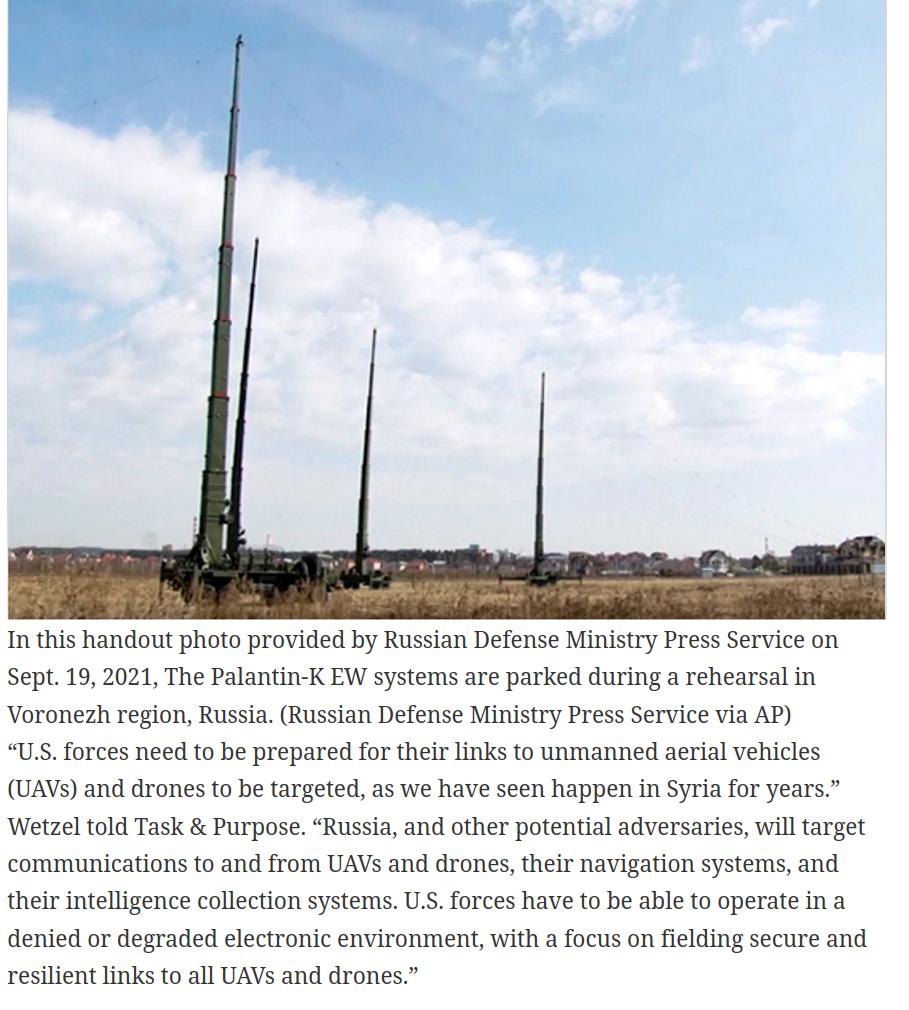
Under an electronic attack, American service members may need to resort to seemingly anachronistic forms of communications. For example, the Ukrainians use analog landline field phones because they cannot be jammed by the Russians, Coffee or Die reporter Nolan Peterson revealed.
A contested electronic environment could also make it more difficult for U.S. military aircraft to strike their targets. In 2018, Army Gen. Tony Thomas, who led U.S. Special Operations Command, said during a speech that an AC-130 gunship over Syria had been temporarily disabled by an electronic warfare attack.
Thomas told Task & Purpose on Monday that the AC-130 was still able to carry out its mission despite the electronic jamming. It is unclear whether the electronic attack was launched by Syria, Russia, or the Islamic State group.
“But we had to work around in a ‘dirty’ battlefield as opposed to some of the areas in which we had been operating in previous years,” Thomas said, referring to the contested electromagnetic environment. “It also reminded us that our peer adversaries have that capability in large quantities.”
The threat of electronic warfare remains “an ever-present reality” for U.S. troops in Syria, said Air Force Lt. Col. Gina McKeen, a spokeswoman for Combined Joint Task Force – Operation Inherent Resolve.
“U.S. troops and coalition partners are working together to minimize the electronic warfare threat to operations in the Levant in order to ensure the enduring defeat of Daesh [ISIS],” McKeen told Task & Purpose.
In October 2020, the Defense Department released its “Electromagnetic Spectrum Superiority Strategy,” which calls for investing in “revolutionary, leap-ahead technologies” to combat electronic warfare.
“Recognizing U.S. reliance on the EMS [electromagnetic spectrum], our adversaries have spent 30 years studying, investing, and implementing policies, capabilities, and procedures with the single focus of gaining military advantage over U.S. forces,” the strategy says. “These adversaries are developing and fielding advanced technology that targets U.S. capabilities across the EMS.”
For junior enlisted U.S. service members and noncommissioned officers, Russia’s use of electronic warfare in Ukraine is a reminder that they have an electronic signature – just as they have heat and visual signatures – that can be detected, targeted, and hit, said retired Army Lt. Gen. Ben Hodges, former commander of U.S. Army Europe.
“We should expect that the Russians will jam/intercept our communications,” Hodges told Task & Purpose. “They already do this occasionally. That’s why it’s important we train on this at our training centers and home station so that soldiers are disciplined to minimize Russian EW [electronic warfare] effects.”
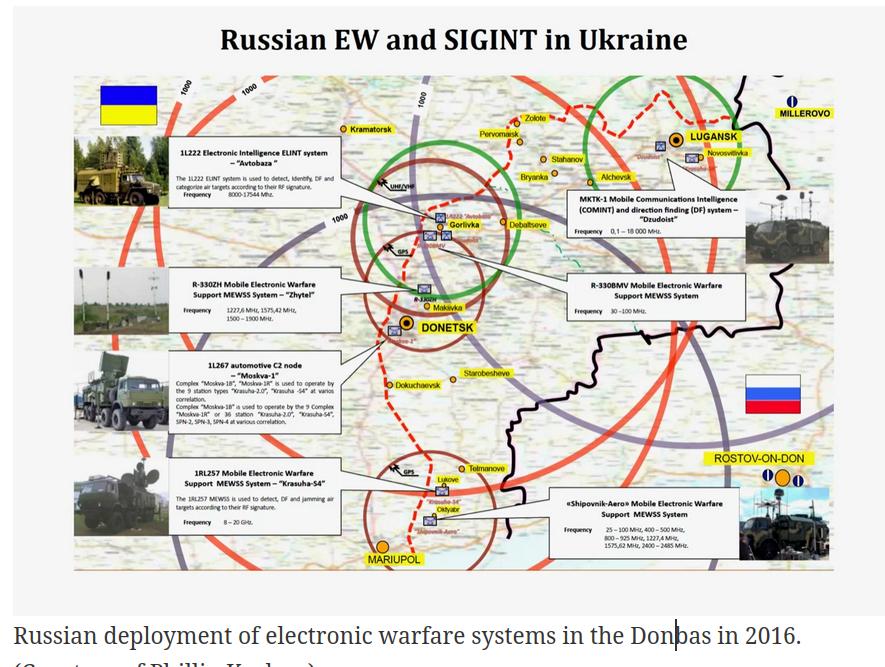
U.S. troops must also continue to practice proper procedures to make sure that they are always clear and concise whenever they communicate in a contested electronic warfare environment, he said.
“Assume that you can be jammed and/or intercepted and thus targeted, no matter what system you are using,” Hodges said.
The Russians have learned that lesson the hard way by using cell phones when their communications systems failed. That has made it easy for the Ukainians to find, target, and strike Russian troops, including general officers.
Right now, the Russians have effectively put their jammers on blast so that regions of Eastern Ukraine are electromagnetic dead zones, where neither the Ukrainians nor Russians have access to communications, radars, and other sensors, said retired Air Force Lt. Col. Glenn “Powder” Carlson, president of the Association of Old Crows, a professional organization for electronic and cyber warfare professionals.
Carlson compared the situation to a scene in the movie “The Hunt for Red October,” in which a Navy officer describes how the Soviet fleet was moving too quickly to detect anything on active sonar: “They could run over my daughter’s stereo and not hear it.”
If U.S. troops had to fight in such an environment, they would likely need to use High, Very High, and Ultra High Frequency radios to communicate with each other, Carlson told Task & Purpose.
“EW [electronic warfare] is very much a chess match,” Carlson said. “There’s always moves and counter moves. When I came into it, it was called ‘electronic countermeasures.’ And then you had electronic counter-countermeasures. From those terms, we’ve changed to ‘electronic support,’ ‘electronic attack,’ ‘electronic protect,’ because otherwise we end up with too many ‘counters’ in there.”
The Russians have long been known for their prowess in electronic warfare. Philip Karber, a Marine veteran and national security analyst, has made 39 trips to Ukraine since March 2014, spending a total of 189 days with Ukrainian combat troops. He remembers one incident years ago when the Ukrainians he was with not only came under Russian artillery fire, but the Russians also called the Ukrainian commander on his cell phone to taunt him.
However, even though Russia’s latest invasion of Ukraine began in late February, it has only been recently that Russian electronic warfare efforts have become increasingly effective, said Karber, president of the Potomac Foundation, a think tank in Washington, D.C.
That is partially because the Russian forces that took part in the initial assault on Kyiv may not have been properly trained how to use electronic warfare systems, Karber told Task & Purpose. Those forces may have also been too dispersed and moving too quickly to launch effective electronic warfare attacks. And it is possible that the Russians found they were inadvertently jamming their own systems.
One lesson of the war in Ukraine is that American troops are vulnerable to electronic warfare attacks, said Karber, who argued the U.S. military is too narrowly focused on countering cyber threats.
“We have not addressed the vulnerability – particularly of our command posts – that are dependent on communication, which has grown exponentially,” Karber said. “We have not gotten used to operating without electronic communication, either using land wires or runners, which both the Russians and Ukrainians have learned to adapt to as well. We are really not prepared for that level of electronic warfare, in my opinion.”
Well then…
I posted this in another article and a software update somehow erased the content. So here it is again. I hope that you enjoy it.
Airmen with Comic Sans name tapes are testing the limits of Air Force regulations
This is the modern United States military. It's what is going on throughout the military, and is clear and complete evidence for a wholesale rot and decay of all pillars of American structure. -MM
“First sergeants everywhere just sensed a disturbance in the Force.”
The Air Force has a long tradition of defying the odds and pushing the envelope. Take Brig. Gen. Chuck Yeager, a hero of World War II who became the first human to fly at supersonic speeds; or Col. John Boyd, who defied his own service to create the F-16 fighter jet. And now, in an era where Air Force Chief of Staff Gen. Charles “CQ” Brown Jr. is encouraging his branch to “accelerate change or lose,” airmen are taking up the challenge by printing out their uniform name tape in Comic Sans, Wingdings and Old English instead of the standard block sans serif lettering used by everyone else in the service.
Why stand out from the herd like this? Well, airmen argue that Air Force Instruction 36-2903, which regulates uniforms and appearance, does not technically prohibit them from doing so.
“Most airmen are familiar with AFI 36-2903 (Dress and appearance), but I had a good amount of time to read over it while in training,” said an anonymous cyber warfare officer who posted to Reddit last month an image of his name tape in Comic Sans. “I noticed that the [operational camouflage pattern] name tapes lacked the descriptions that the other tapes had.”
Indeed, while AFI 36-2903 states that name tapes for the outdated airman battle uniform must be “dark blue block lettering,” for the current operational camouflage pattern, it states only that the name tape must be “stitched in Spice Brown block lettering, centered on an OCP background tape and affixed over the right chest pocket with velcro fastener,” for the airman’s last name, and that a separate name tape saying “U.S. Air Force” must be affixed over the left chest pocket. It does not specifically mention which font or typeface that lettering must be in. It specifies only that it must be “block,” where each letter is uniform and distinct and disconnected from others.

The Air Force disagrees with that interpretation, however. Tech Sgt. Deana Heitzman, an Air Force spokesperson, pointed out that Figure 5.2 in AFI 36-2903 clearly shows an example of the operational camouflage pattern uniform top with standard block lettering for the name tapes. And “the omission of a specific item or appearance standard does not automatically permit its wear,” Heitzman said, referring to section 1.5.1.2, which also says “any item not mentioned in this Air Force Instruction (AFI) is not authorized for wear.”
When asked about those points, the cyber officer said that there is often some type of catch-all like that in the regulations.
“These situations usually boil down to commander’s intent, which I predict precludes Comic Sans in this scenario,” he said. “Ultimately, it is of course up to [Air Force Headquarters] whether or not something will fly, and we all respect that decision.”
Still, last month it was worth giving Comic Sans a shot. The officer said the catalyst came when he waited two weeks for new name tapes to arrive from the Army & Air Force Exchange Service only for them to spell his name wrong. That made him want to take the Comic Sans typeface, which has long been mocked for looking juvenile, for a spin. The airman asked a buddy with an embroidery machine to make a set of Comic Sans typeface name tapes for him. He then posted a shot of it to the unofficial Air Force reddit, and it received far more attention than he had expected.
“I thought it might get a few dozen comments, but then I woke up to thousands of upvotes and comments,” the airman told Task & Purpose. “It actually sparked some good discussion on regulations and professional image.”
Like he said, some commenters took the opportunity to discuss the subjectivity of what counts as professional military image. One pointed out that the five elements of the Air Force’s dress and appearance standards are “neatness, cleanliness, safety, uniformity and military image.” While the first four are “absolutely, objective criteria,” the fifth “is subjective, but necessary,” the regulation says.
While “military image” is subjective, one commenter argued that Comic Sans is actually more legible than the usual typeface. There is also a claim among Comic Sans fans that the typeface is easier for people with dyslexia to read, though there does not appear to be any solid scientific evidence supporting that claim.
Of course, there were plenty of joke comments too, and solicitations from others who wanted special name tapes too.
“First sergeants everywhere just sensed a disturbance in the Force,” wrote one reader.
“Papyrus for me!” wrote another.
For his part, the officer said he did not encounter much resistance to his new name tape on base during the one day he wore it.
“Nobody noticed unless I brought it up,” he said, adding that he was not chewed out for the style choice because “Thankfully I have really good leadership.”

The cyber warfare officer actually kicked off a small trend, as other airmen inspired by his post made custom name tapes of their own.
“I see your Comic Sans and raise you Old English,” said one anonymous senior airman who posted a shot of his ye olde-style name tape to Reddit last week. Turns out, many of his fellow airmen did not have a problem with it.
“My immediate peers and leadership liked them and didn’t have anything negative to say only ‘of course you would’ (I’ve read 36-2903 for various uniform things and new updates, more than I would like to admit),” he wrote to Task & Purpose.
The only negative response the Old English airman received was from his senior leadership, who asked if he was making some kind of a joke. The senior airman pointed out that the AFI did not specify the typeface, but he was told that he could not wear the name tape because he did not buy it from an Army & Air Force Exchange Service or an authorized military clothing store.
“So the reign of the Old English tapes ended after 3/4 of the day,” after which he switched back to the normal ones, the airman said. However, he later checked with the Army & Air Force Exchange Service and found that they could in fact make the name tape in Old English. The airman said he plans to bring it back once he makes sure he can barracks lawyer his way out of similar encounters in the future.
“I didn’t intend to come off as making a joke or being one,” he said. “My intentions were to do something that was unique and within the given guidance. And if I made some people smile and laugh on the way even better.”
Old English may have been short-lived, but Wingdings, the 1990s predecessor to emojis, received a warm welcome in name tape form.
“Most people when they saw them said ‘ha! I saw some of those on Reddit. Wait. Was that your post?!’” said Tech Sgt. Tom Burright, a cyber warfare operator who posted a picture to Reddit last week of his name tape with U.S. Air Force written in Wingdings.
“Most people didn’t even notice,” Burright said. “We were at a group lunch at a restaurant and it took about 20 mins for the guy across from me to say “oh my god I didn’t even notice your name tapes!”
Even the higher ranks above Burright laughed and said they loved it, and it was only one fellow tech sergeant who “didn’t really like it but also accepted that it wasn’t breaking any rules and shrugged it off,” he said. One of the highlights of Burright’s time wearing it was a personnel worker looking at his name tape to get his last name and saying “oh my god,” he recalled.
Some of the warm reception might be due to cyber warfare’s unique culture in the Air Force. Like the Old English airman, Burright was inspired by the original Comic Sans Reddit poster, whose uniform and Reddit username sports a cyber warfare badge.
“[Of course] it’s cyber too [laughing my ass off],” one commenter wrote about the original post.
“Typical cyber airman,” wrote another..
“Definitely some wiggle room in there, so I got a martial arts ‘karate’ type black belt, purchased some black reflective fabric on Amazon, and took it to uniform alterations on the base to have them wrap the entire black belt in the black fabric,” he said. “The result was a belt that was completely reflective and worn comfortably around my waist.”
Burright wore the karate belt every day, and while some higher-ranked individuals tried to argue with him about it, a quick citation of the AFIs convinced them to “just accept it and move on with their life,” he said.
Most folks Burright encountered got a good laugh from it, including Iraqi civilians who were initially confused, but then would call the airman Jackie Chan or Bruce Lee and show off their best karate moves. Burright said his Wingdings name tape is in the same spirit of harmless fun.
“I’m still smart about it and don’t want to make the Air Force look bad or reflect badly on my unit,” said the airman, who wears the usual name tapes at public or off-base events.
There could soon be more airmen following in Burright’s and the other Reddit users’ footsteps. The airman said he had received several messages from other airmen asking how they could make special typeface name tapes too. He has thought about making name tapes in elvish, the language of elves in “The Lord of the Rings,” or hieroglyphics. Hopefully the Reddit posts about those will be just as fun as Wingdings.
A common saying in the military is that regulations are written in blood, meaning that every regulation in the book came from a prior service member’s suffering or, in some cases, their intentional trolling. While the regulation on name tapes does not seem to be written in blood or in Wingdings, many commenters on Reddit anticipated it may be in the near future.
“We are seeing the birth of those rules and it’s beautiful,” said one commenter. “Some airman is going to read the AFI one day and it’s going to say ‘US Air Force name tapes must be in English and in (font name). Examples of unacceptable fonts are wingdings, comic sans, papyrus, etc.’ Then they’re going to wonder what someone did to make that get added to the reg.”
Yet those rules may take longer to emerge than service members might expect. Tech Sgt. Deana Heitzman, the Air Force spokesperson, said the Air Force directorate for manpower, personnel and services had not heard of airmen wearing name tapes with unusual typefaces before, but it does not plan on developing any new language about the issue, considering the existing language she pointed out earlier.
“No, we are not currently developing any language to specify a typeface,” she said. “Nametapes are developed primarily by Military Clothing Sales Stores using manufacturer drawings developed by the Institute of Heraldry and the drawings utilize blocked lettering as required.”
Airmen who hope to sport Papyrus, Baskerville, Press Start 2P and other silly typefaces may get the book thrown at them in the future, but for now, viva la Comic Sans.
“It was a nice little laugh,” Burright said. “Work continued as usual.”
Steely Dan – Aja {Remastered} [Full Album]
This takes me back to the late 1970’s. My GTO. Cleaning out the stems , twigs and seeds, from the “nickel bag” on the open album. I had these HUGE “Technique®” speakers that stood maybe a meter (a yard) tall, and were two feet thick. I also had a “Panasonic®” stereo equalizer. And we would gather… smoke, drink whiskey sours, play chess and jam out…
”]CIA in French Indo-China
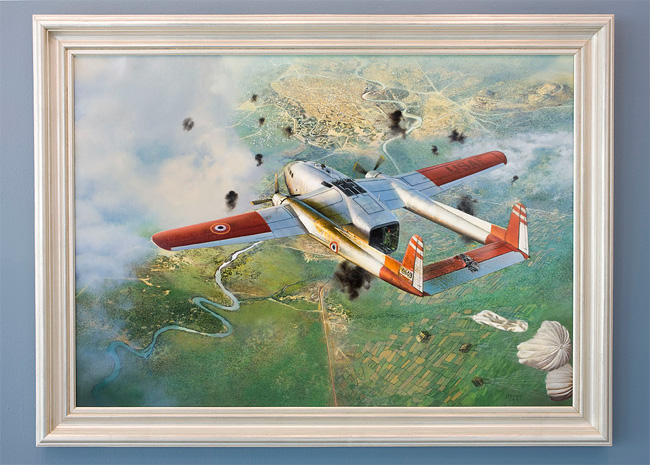
Jeffrey W. Bass, Oil on Canvas, 2006, Donated by the Fairchild Corporation. This painting commemorates air operations of Civil Air Transport (CAT, an Agency proprietary) and its CIA contract pilots in support of French forces at Dien Bien Phu during the final days of the conflict between the French and Viet Minh in 1954.
In Fairchild C-119s with US Air Force markings hurriedly painted over with French Air Force roundels, 37 CAT pilots volunteered to fly supplies from the French airbase at Haiphong to the battlefield near Vietnam’s border with Laos. (Photo by Central Intelligence Agency)
How will history remember you?
By your photos or by your deeds?





America can beat those terrible Chinese commies…

How the Army once got its own soldiers stoned out of their minds
Talk about a bad trip.
During the Cold War, an Army sergeant with a Combat Infantry Badge on his uniform stumbled through the woods and was apparently unable to comprehend a tree branch in front of him while being led around an obstacle course.
“No, I’m not cold at all,” said another soldier who was, to put it mildly, tweaking out of his mind while speaking to a couple of Army doctors, despite not seeming to know where he was. “I could run 100 miles right now.”
These were some of the test subjects from medical experiments conducted for two decades at the Edgewood Arsenal, a section of Aberdeen Proving Grounds in Maryland. And by “medical experiments” we mean that the Army spent years getting its soldiers high.
The study is the subject of the new documentary “Doctor Delirium and the Edgewood Experiments,” debuting this week on Discovery+.
The question at the heart of these experiments was, bluntly, can you fight a war if you are on a drug trip? Or, if you want to put it in language that’ll pass muster at a closed session in Congress: can psychochemical warfare be used to incapacitate enemy troops?
And in trying to figure that out, thousands of soldiers were used as test subjects while knowingly and unknowingly given a variety of substances, from tear gas to Phencyclidine (PCP) to psychoactive drugs including lysergic acid diethylamide (LSD) and 3-Quinuclidinyl benzilate, known as “BZ.”
“This was the Cold War, and I was assigned to the Cold War at its height,” says Dr. James Ketchum, an Army psychiatrist who oversaw many of the experiments, in archival footage.
Beginning in the early 1960s, BZ became a central focus of testing.
“It’s more like psychosis or delirium,” says one researcher of the effects of the drug.
In one test, four soldiers were given varying doses of the drug and spent the next several days trying — and generally failing — to perform basic tasks like donning a gas mask. One man stayed awake and suffered hallucinations the entire time, completely unable to function.
BZ was eventually weaponized, although it was never employed in combat and the military destroyed all stockpiles at the end of the Cold War. The testing continued until 1975 when the program was shut down amid congressional investigations.
The soldiers were generally recruited by being told that they would mostly be testing equipment for the U.S. Army Chemical Corps. Coupled with the promise of no guard shifts or weekend duty, it might seem like a nice way to spend a couple of months in the Army. While assigned to the temporary duty, as one soldier described it, certain names would be called for that day’s experiments. Because of the classified nature of the program, however, they were rarely told exactly what they were being exposed to.
This also meant that years later, these soldiers found it difficult or impossible to file medical claims with the Department of Veterans Affairs for the after-effects of the experiments.
At the time, the Feres Doctrine also prohibited service members from suing the government for negligence or wrongdoing.
In 2009, though, several of the Edgewood veterans filed a lawsuit against the Central Intelligence Agency, citing the government’s failure to follow the Nuremberg Code, a set of ethical guidelines for medical testing developed following the discovery of Nazi experiments conducted during World War II.
The court ultimately ruled in favor of the veterans, saying that they were eligible for full medical benefits and that the government had a duty to continue warning them of any potential side effects of the tests.
However, many of the test subjects interviewed in the documentary, say that it has still been difficult to get a clear picture of what was done to them. Many have likely never been contacted by the government, while others in the film showed consent forms with dates that don’t even match their service records.
In the archival interviews, Ketchum, who passed away in 2019, is more sanguine about the tests.
“I’ve got regrets about a number of things I’ve done,” says Ketchum. “But that would not apply to the work I did at Edgewood.”
Inside A 1947 Boeing 377 Stratocruiser, The Largest And Fastest Aircraft In Commercial Service

After World War II, Boeing reentered the commercial market with a new long-range airliner, the Stratocruiser (Model 377). It was the first Boeing commercial transport since the Stratoliner, and like its military counterpart, the C-97, was based on the B-29 Bomber. It possessed all the speed and technical improvements available to bombers at the end of the war.

The Stratocruiser’s first flight was on July 8, 1947. Its design was advanced for its day; its innovative features included two passenger decks and a pressurized cabin, a relatively new feature on transport aircraft. It could carry up to 100 passengers on the main deck plus 14 in the lower deck lounge; typical seating was for 63 or 84 passengers or 28 berthed and five seated passengers.

Separate men’s and women’s dressing rooms provided a place for passengers to prepare for sleep or the dawning day.

During the early 1960s, Aero Space Lines ballooned the Stratocruiser’s fuselage into a whale-like shape to carry spacecraft sections. Nine of the variants were assembled. The first was called the “Pregnant Guppy,” followed by five larger “Superguppies” and three smaller “Miniguppies.”
A unique feature of the Boeing 377 Stratocruiser was its lower-level lounge and bar, reached via a spiral staircase.

Aboard the double decker Boeing 377, passengers could descend the spiral staircase from the main deck to a fabulous lounge. This was the most deluxe feature of the luxurious Stratocruiser. Here passengers could socialize and enjoy an after-dinner drink and perhaps a game of cards. Although other aircraft of the era had these, none were as large and opulent as the lounge aboard the Pan American World Airways Stratocruiser.



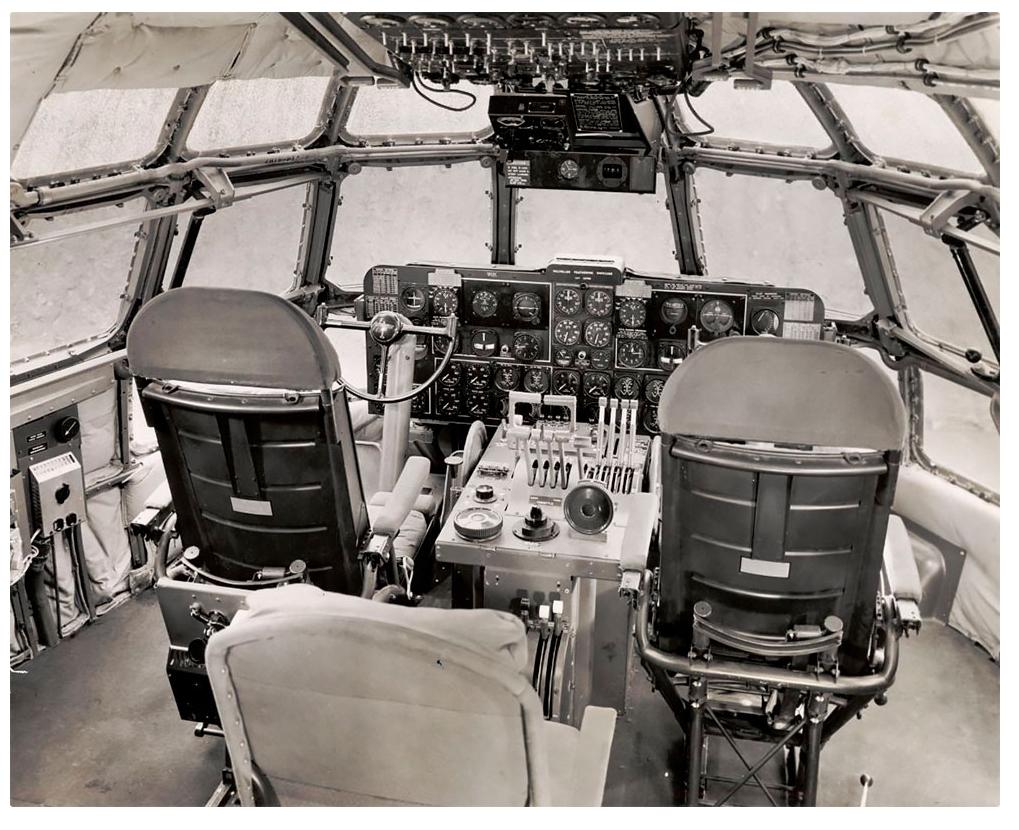



A Pan Am Boeing 377 Stratocruiser at Honolulu International Airport.

The made-for-TV January 6th Capitol Riot hearings kicked off last night with tribute video of a whole lot of pissed-off ordinary Americans marching on the stately building where, that fateful day, the final certification ceremony of a blatantly dishonest election was underway after, mind you, four years of seditious machinations by a weaponized bureaucracy aimed at disabling and destroying the sitting chief executive — in case it’s unclear why the huge crowd flocked to the capital city in the first place.
The Party of Chaos is playing its hand: a select committee of seven deuces and two jokers. Do they look like they’re going to get through this extravaganza without humiliating themselves? You never know what might come out of some witness’s mouth, despite the orchestrations of former ABC’s Good Morning America producer James Goldston, brought in to cement the narrative in the collective public brain, pre-softened with years of manifold media mind-fuckeries.
It’s the centerpiece of their midterm campaign. And I submit that it may be just a little premature as it becomes increasingly clear that the Party of Chaos, led by the “winner” of the 2020 election, “Joe Biden” and unseen handlers, have nearly completed their mission of destroying the USA as an ongoing enterprise. Broken economy, broken health, broken military, broken law enforcement, broken culture, broken morale. They sure got’er done. Do they think nobody noticed?
If the January 6th Committee show is short-and-sweet, say a few weeks, it will be quickly forgotten in the welling summertime heat as the great masses of America groan under $5… $7… maybe $10-a-gallon gasoline prices (or maybe no gas at all) while diesel prices at $6.50 today are already destroying the trucking industry — and thus the entire system for delivering all goods around the country. The zeitgeist is quivering with intimations of food shortages and the philosopher reminds us that any given body politic is just nine missed meals away from bloody rebellion. Have another look at that motley January 6th committee group photo and consider the lampposts along Pennsylvania Avenue.
It’s a dangerous game trying to beat down the population this way, and to what end, exactly? I doubt that even the Blue Team could articulate it… or would dare to… because at this point their sole aim, really, is to hide their many acts of criminality over a span of the past six years and escape prosecution, a compelling motive. And it’s getting harder and harder to conceal all that, especially their campaign to physically harm over 200-million people with mRNA “vaccines.” The body-count is rising — way higher even than deaths from the hypothetical “pandemic” that the “vaccines” were supposedly concocted to vanquish, and spectacularly failed to.
And was this Covid-19 “pandemic” itself cooked up tacitly to disorder the 2020 election with mail-in ballots so easily replicated, harvested, and stuffed by the bale into drop-boxes under cover of night? Kind of looks like it, more and more. And now, the Party of Chaos is so keenly desperate to stay out of prison that they apparently seek to repeat the trick in the fall midterm, which is otherwise quite certain to sweep them ignominiously off the game board like so many misplayed quoits.
Thus: monkeypox, the visitation of weeping pustules far more visually horrifying than was Covid-19 in all its spikey iterations, if actually hardly lethal. The hopelessly corrupt CDC has already gotten into the act with its guidance to mask-up on airplanes against this new plague. Perhaps travelers would do better wearing condoms on their noses. Apparently, monkeypox spreads by means of intensely intimate flesh-to-flesh contact. The current outbreak popped up following a giant sex rave in the Canary Islands, men having rough sex with other men. Suspicions abound that this monkeypox bears the earmarks of something engineered in a lab. Jeez, d’ya think?
If there is a God, when judgment is at hand, a jury in the court of the angels will bum-rush this Party of Chaos into a special hell of an eternal drag queen story hour, featuring Rep. Adam Schiff (D-CA) reading Uncle Remus to an assembled multitude of howling Jacobins, Bolsheviks, and Maoist Red Guards. Refreshments will not be served. Ever.
Jus primae noctis: Did Medieval Lords Really Sleep With Serf Brides First?
The jus primae noctis , droit du seigneur , or “right of the first night,” is an alleged medieval custom which permitted lords to engage in sexual intercourse with the brides of their male subjects on the first night after marriage.
Spanning centuries, this seedy exercise of male domination has been referenced across the eons, yet the reality of its existence remains unclear.
It is a topic that has been hotly discussed by anthropologists and historians, who have debated whether the jus primae noctis is a custom, a law, or a simply a sordid myth.
Ancient and Medieval References to jus primae noctis
Jus primae noctis is a phenomenon that has been documented throughout history, stretching back nearly 2,000 years. The earliest textual reference can be found in the Epic of Gilgamesh , written in 1900 BC, where Gilgamesh, who was king of Uruk, enjoyed many privileges over his male subordinates and their newlyweds:
“He cohabits with the betrothed bride–He first, The husband afterwards.” (Epic of Gilgamesh as cited in Wettlaufer, p. 112.)
In 450 BC, the same practice was reported by the Greek historian Herodotus in his Historiae, who wrote of a similar power dynamic in the society of the Adrymachidae, a Lybian tribe. Before virgins were married, he chronicled how the king had the right to deflower them before their husbands could “have” them.
The Greek scholar Herakleides Pontikos, writing in 400 BC, outlined the same benefits for the ruler of the Greek island of Kepahlonia. Next, during a slave revolt at Volsinii, an ancient Italian city, Valerius Maximus in 20 AD would note how free men were unable to marry a women who had not been deflowered by a slave first.
Several centuries later, in 300 AD, this sexual entitlement privilege was attributed to Emperor Maximin. In the Middle East, the Romans and Greeks, both occupiers at various times, were said to engage in the practice, according to the Talmud, an ancient Jewish text.
The tradition would purportedly continue into the early medieval age. The Annals of Clonmacnosie in Ireland from the 8th century AD, for instance, recorded how the Vikings believed they were entitled to jus primae noctis with Christian brides:
“The cheefe Gouvernour of them should have the bestowinge of any woman in the k’dom the first night after her marriage, so before her own husband should have carnal knowledge of her, to whom he pleased or keep her to himself by night, to satisfy his lust.” (Annals of Clonmacnosie as cited in Wettlauger, p. 112.)
The idea of jus primae noctis would be maintained into the 14th century, when a French tale, called Baudouin de Sebourc mentioned it as a lord’s right if the bride couldn’t provide a sufficient dowry to his male serf. By the 16th century, evidence suggested a widespread belief in the existence of jus primae noctis , with many European lords using the notion to legitimize customs of sexual harassment. In 1543, a charter in a Swiss village outside of Zurich read:
“…and when the wedding starts, the bridegroom shall allow the sergeant to lie with his bride for the first night, or he shall buy her off with 5 pounds and 4 pennies.” (Staatsarchiv des Kantons Zürich as cited in Wettlaufer, p. 115.)
Sometimes, however, the lord would go too far, and peasants would be forced to act. At the end the 15th century, in the only successful peasant revolt of the Middle Ages, the serfs of Catalonia in Spain rose up against their abusive liege lords. The lords had introduced various coercive acts on the wedding nights of their serfs, including climbing into the bed of the bride for their own sexual gratification. In a similarly perverted manner, landed aristocrats in France permitted themselves to place their bare leg on the bride’s bed.

In this 1874 AD painting by Vasily Polenov, Le droit du Seigneur, a synonym for Jus primae noctis, shows an old man is bringing his young daughters to his feudal lord. (Vasily Polenov / Public domain )
Ritual Defloration and the Anthropologists’ View
In prehistoric times, the ritual defloration of virgins by elites, such as priests or kings, was a common occurrence. In Indian and South American tribes , taking the virginity of young women and girls before marriage was a recurrent practice, and was viewed not as a privilege but as a duty, as primeval peoples remained very superstitious about hymenal blood. In the primordial tribes of Hawaii, it was usually the chief who had to perform what was seen as a sacred duty:
“With many of the families, who were admitted to the royal court because of blood relationship, the virginity of the daughters was strictly guarded and when a girl became of a marriageable age and was spoken for as a wife, she was taken to the chief who would remove her virginity.” (The Polynesian Family System in Ka'u Hawai'i, Tokio, Rutland as cited in Wettlaufer, p. 117.)
Any baby that was produced as a result of this action was often celebrated by the husband, who found great honor in knowing that his wife bore the child of his chief.
The holy priests of India, the Brahmins, were said to offer the same service. Hamilton, an early modern traveler, outlined the details and motivations of such a ceremony in the tribes of the Zamorin:
“When the Zamorin marries, he must not cohabit with his bride till the Nambudri, or chief priest, has enjoyed her, and he, if he pleases, may have three nights of her company, because the first fruits of her nuptials must be a holy oblation to the god she worships.” (A New Account of the East Indies as cited in Wettlaufer, p. 117.)
In 1903, German anthropologist German Wilutsky stressed that:
“Every link in the chain of evidence must be followed in order to understand the most recent form of a custom.” (Vorgeschichte des Rechts as cited in Howarth, p. 294.)
Consequently, anthropologists believe that jus primae noctis and its reported episodes in the ancient and medieval eras originated from these early ritual defloration ceremonies.
Comparing them to jus primae noctis , they point to the fact that both feature the sexual exploitation of subservient virgins under the dominion of a powerful master.
As a result, anthropologists tend to believe in the existence of jus primae noctis because it supports their view that humans gradually shifted from polygamous to monogamous societies. To them, jus primae noctis in ancient and medieval society appears as one of the last vestiges of this ancient tradition.
The Historian’s View
In contrast to anthropologists, historians, who have scoured the archival records of the human race, postulate that the jus primae noctis is simply a myth and a gratuitous misinterpretation of two documented medieval systems of obligation in Europe.
The first, known by various names including culagium, jambage, cuissage, and drench de pernada , stipulated that if a slave wanted to marry a free woman, he was required to pay a fee, called a dowry, which he would often acquire through a loan from his lord.
Legal codas state that the lord, after the lending of money, would simply gain the right to have the amount repaid.
This customary payment was erroneously connected with a right given to the lord which permitted him to have intercourse first with the new bride in exchange for his help in securing the dowry payment for his serf.
In practice, however, this unusual right was simply symbolic, and in reality, copulation never occurred and was not part of the written legal directives.
The second involved the Church and its procedures relating to marriage. At the Council of Carthage in 298, an ecclesiastical ban was issued ordering couples to refrain from consummating the marriage for the first three days. The prohibition stemmed from passage in the Book of Tobit, in which Tobias married his wife Sarah. The holy scripture relates how Sarah had been married 7 times previously, and that all her husbands had been killed by the Devil before their marriage could be consummated. To fend off the advances of the Devil, it was instructed that the newlyweds should engage in prayer and other such holy activities for up to three days after the marriage before confirming the union.
However, many husbands, impatient at waiting for three days, would often bribe ecclesiastical authorities for the privilege of copulating with their wife on the first night, which was subsequently misconstrued as the fabled jus primae noctis of the lord. It is unclear how widespread this practice was in medieval times, although in the 14th century it is reported that this became such a problem for the King Phillip IV and Charles VI in France that they demanded the Bishop of Amiens revoke such illicit payments.
In fact, in their search for the existence of the jus primae noctis , historians have found no strong evidence to suggest the practice was legally codified. The only example that even touches on the subject, and which is obviously fabricated, come from the Chronicle of Boece , a fictional history of the early kings of Scotland published in 1526 by Hector Boece. It reports how a King Ewen III of Scotland, in 875, legally sanctioned the right of the first night:
“And othir law he maid, that wiffs of the commonis sal be fre to nobilis; and the lord of the ground sal have the maidinheid of all v dwelling on the same.” (Chronicle of Boece as cited in Bullough, p. 164.)
The author goes on to state that the practice remained in existence until 1061, when it was repealed by King Malcom Canmore. Despite being an obvious invention, the Chronicle of Boece remains the most traceable source for later references to the custom in early modern works, where it is repeated multiple times. In 1666, Sir John Skene would reiterate this piece of fake history in his Exposition:
“King Evenus did wicked lie ordaine, that the Lord or maister of the ground, or land, suld have the first nicht of ilk maried woman within the samin. The quhilk ordinance was after abrogate be King Malcolme the Thrid; quha ordained, that the Bride-groome sulde have the use of his awin wife.” (Exposition of the termes and difficill mordes, conteined in the foure Buikes of Regiam Majestatem as cited in Howarth p. 298.)
In a later story from 1773 tome The Journey to the Western Islands , Johnson and Boswell would conveniently re-discover traces of this ancient tradition on their travels around Scotland, this time referenced as the “ mercheta mulierum ”:
“M’Quarrie insisted that the Mercheta Mulierum, mentioned in our old charters, did really mean the privilege which the lord of a manor, or a baron, had, to have the first night of all his vassals’ wives.” (Journal of a Tour to the Hebrides as cited in Howarth p. 299.)
The Myth of jus primae noctis
The propagation of the jus primae noctis myth was aided by its mention in many famous literary works, where it became a staple by authors searching for a sensationalist plot-line or a literary device as a convenient obstruction to marriage. In Shakespeare’s Henry IV, Part II, Jack Cade uses the right to try and discourage rebellion:
“The proudest peer in the realm shall not wear a head on his shoulders, unless he pay me tribute; there shall not maid be married, but she shall pay to me her maidenhead ere they shall have it.” (Henry IV, Part II as cited in Howarth p. 300.)
Although being a regular literary device, the historical basis for the jus primae noctis , a term that only started appearing in the 18th century, remains very weak, and implies that it was likely a myth stemming from a depraved misinterpretation of the obligations of peasants to their lords and the fake history of Scotland written by Hector Boece in 1526.
In reality, the unsavory implication of the “right of the first night” was probably a medieval joke that went too far and was grounded in the traditional superiority that lords exercised over their subjects, especially if they were female.
The very few references to customs or laws that involved the sexual exploitation of women vassals were not legally enforceable mandates, but simply sleazy exercises in male power displays over the less powerful classes.
Thus, anthropologists are correct to identify jus primae noctis as more of a custom, rather than a law, which has sadly occurred repeatedly in human history.
CIA Blood Chit in flights in and around China

This silk blood chit was issued for use by the Office of Strategic Services in the China-Burma-India Theater.
Written in several native languages, it reads, “This foreign person (American) has come to China to help the war effort. Soldiers and civilians, one and all, should save and protect him”. (Photo by Central Intelligence Agency)
CIA “alterations” to building codes
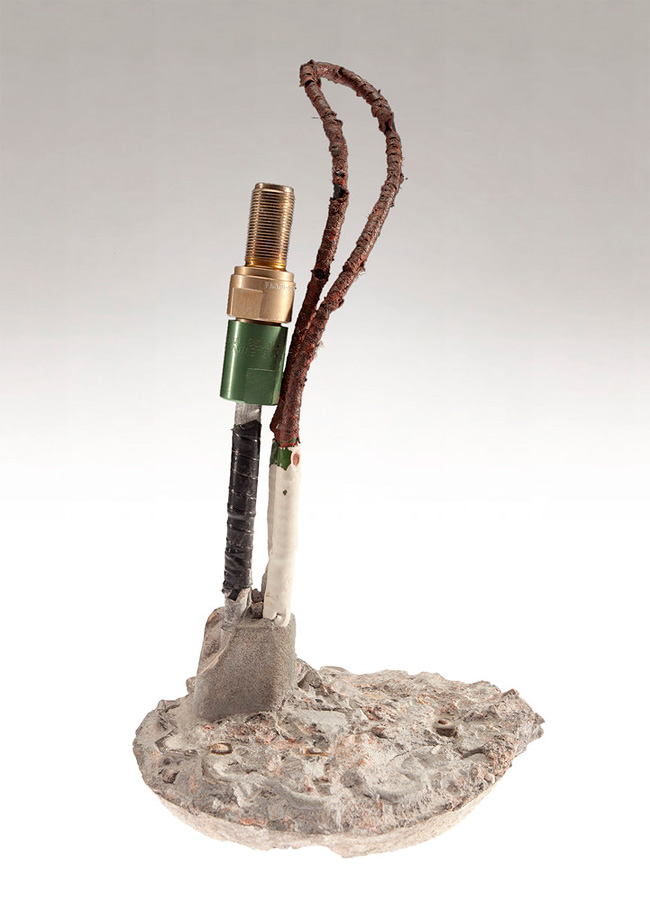
What looked like a concrete ball was actually a “gap-jumping antenna” removed from one of the preformed concrete columns in the embassy office building. US investigators called it “gap-jumping” because it coupled magnetically with a matching antenna in the adjacent column. This allowed data to be transmitted without a physical electrical connection. (Photo by Central Intelligence Agency)
Automatic Man 1977

OMG! I had this album when in High School and I must have played it until the grooves were worn out on the platter.
"Remnants of both Steely Dan and Earth Wind & Fire! So much more vocal based than their debut album..."
CIA extraction plans

To rescue six American diplomats who evaded capture during the seizure of the United States embassy in Tehran, Iran, on 4 November 1979, CIA technical specialists created a fake movie-production company in Hollywood and delivered disguises and documents that made possible the diplomats’ escape from Iran in 1980.
The team set up “Studio Six Productions” and titled its new production “Argo”. This document includes an Introduction, Story Treatment & Locations, and Visuals. (Photo by Central Intelligence Agency)
Stunning Photos of Elvis Presley’s 1960 Luxury Gold Cadillac

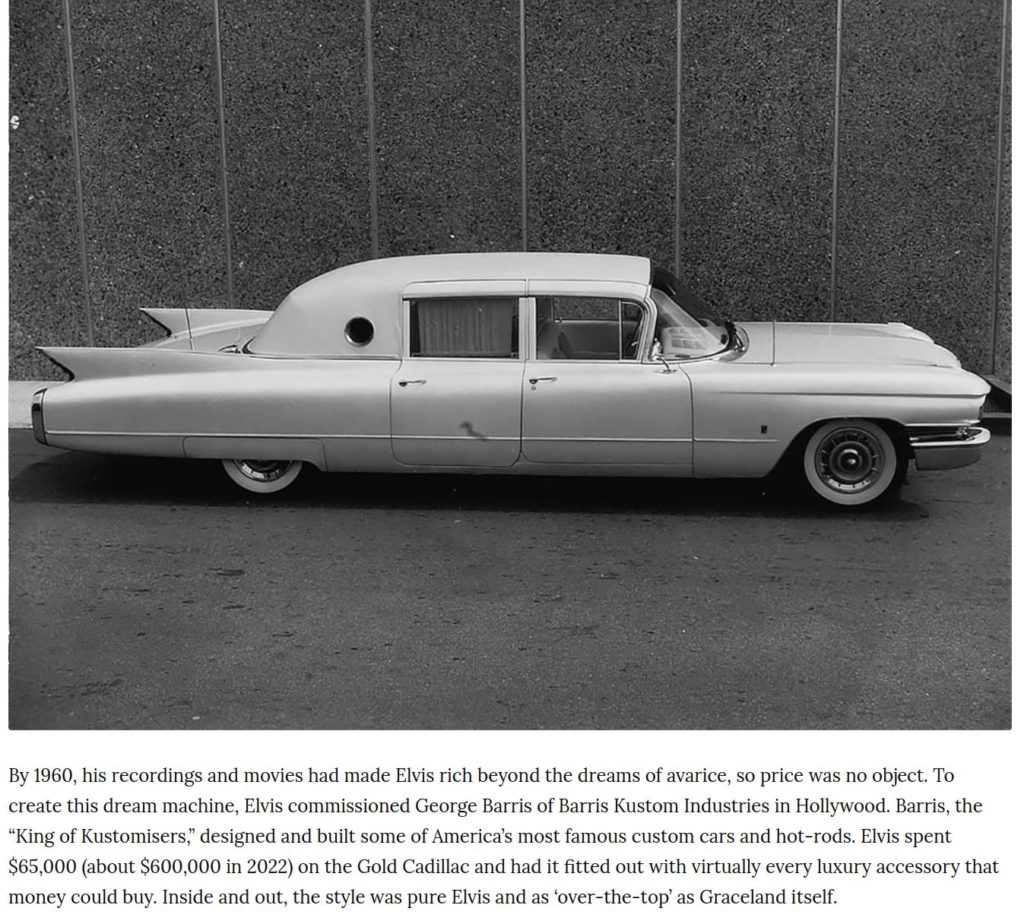
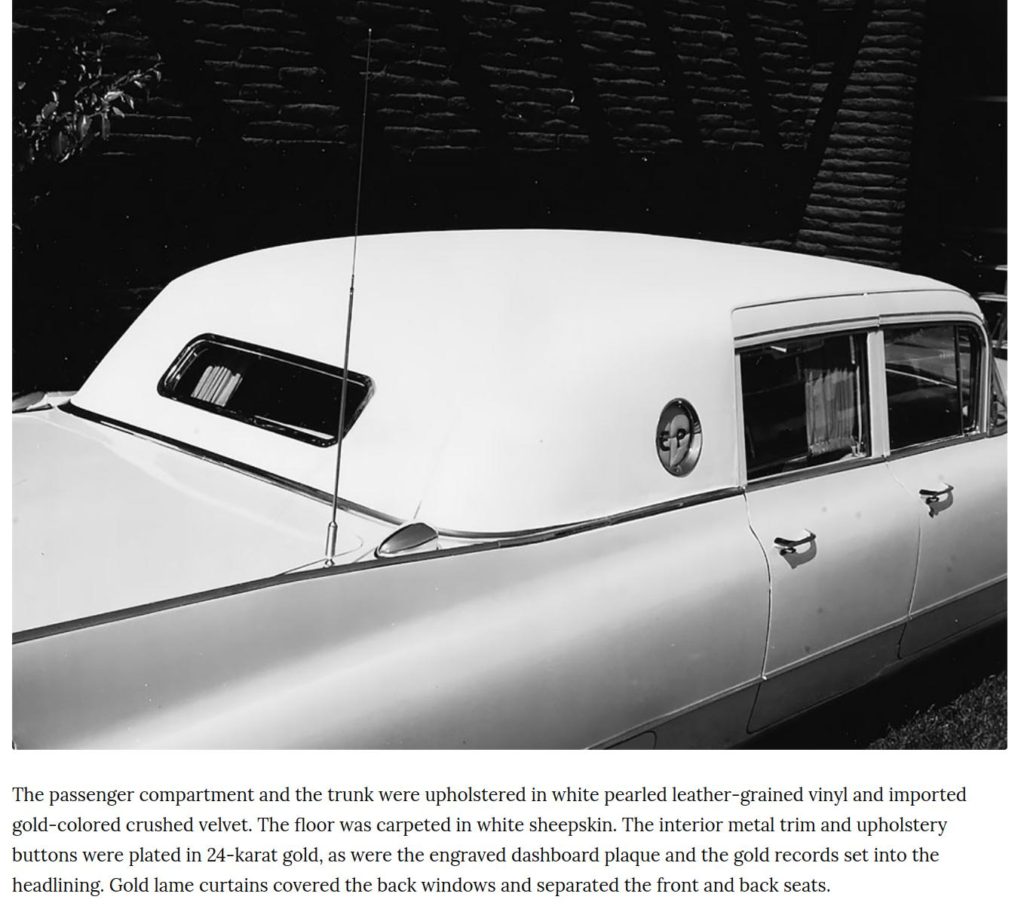

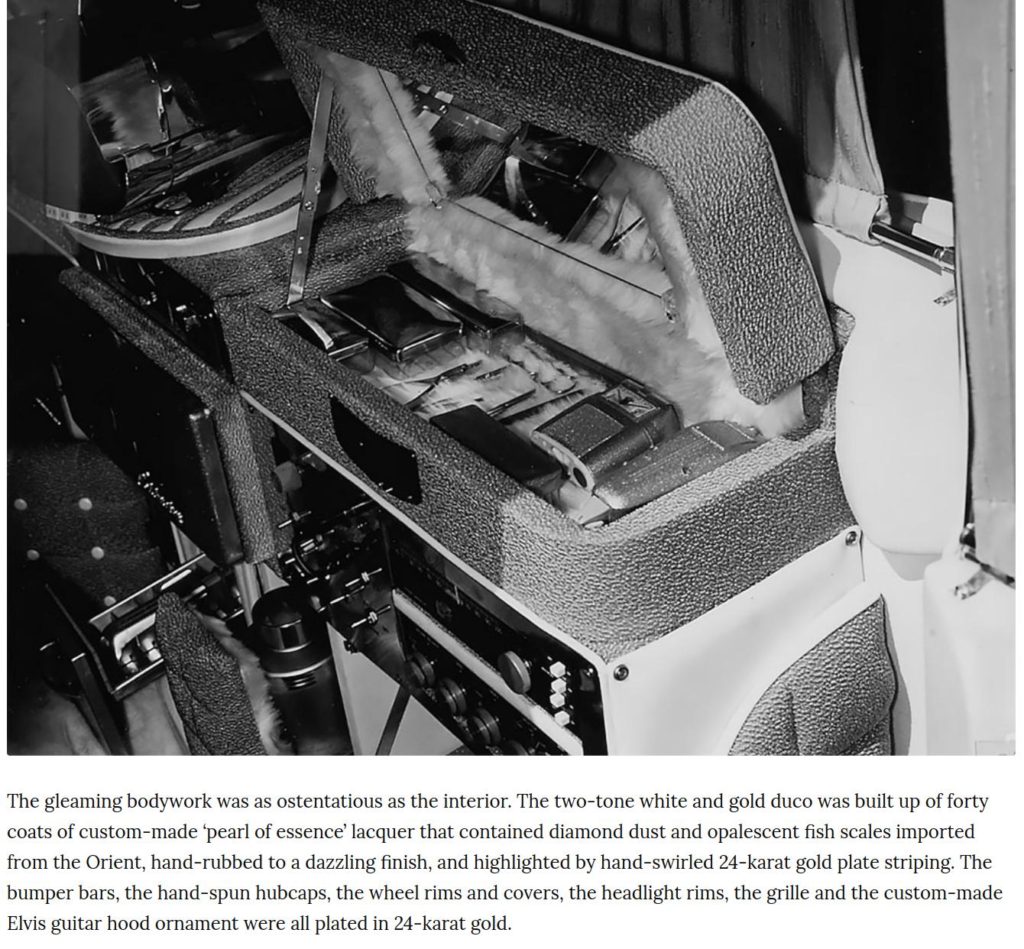
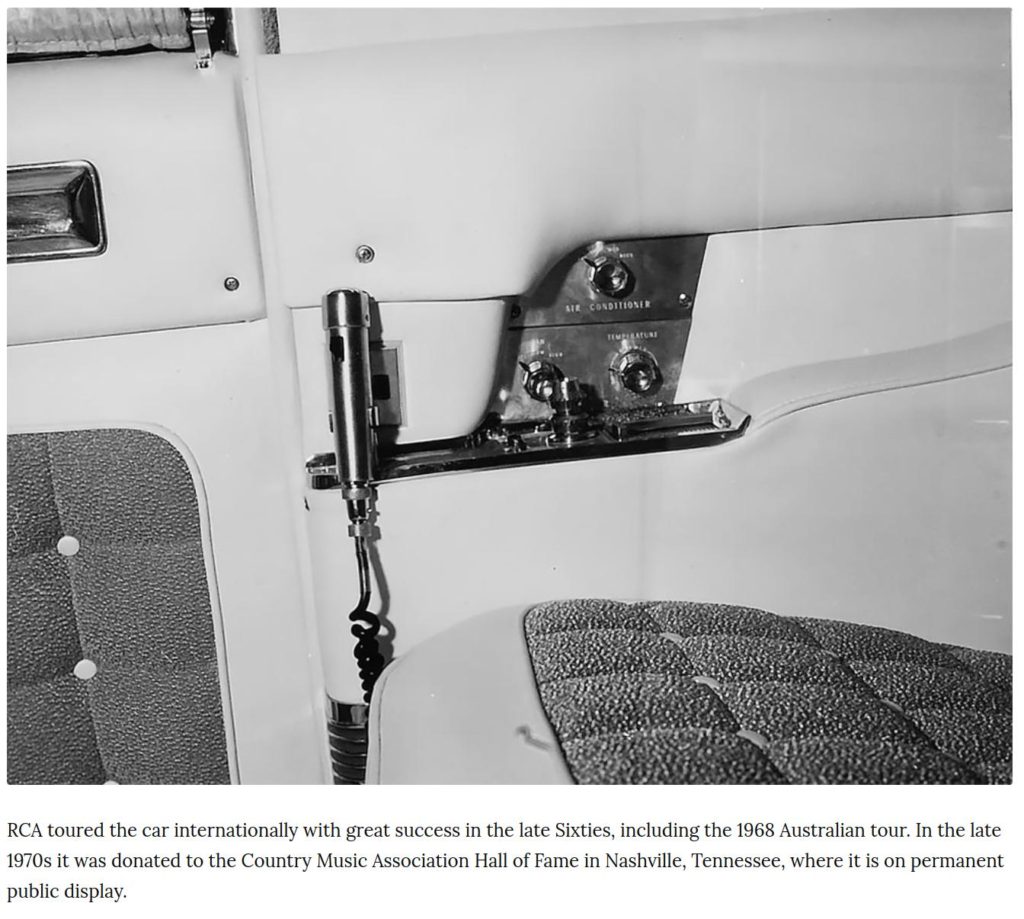

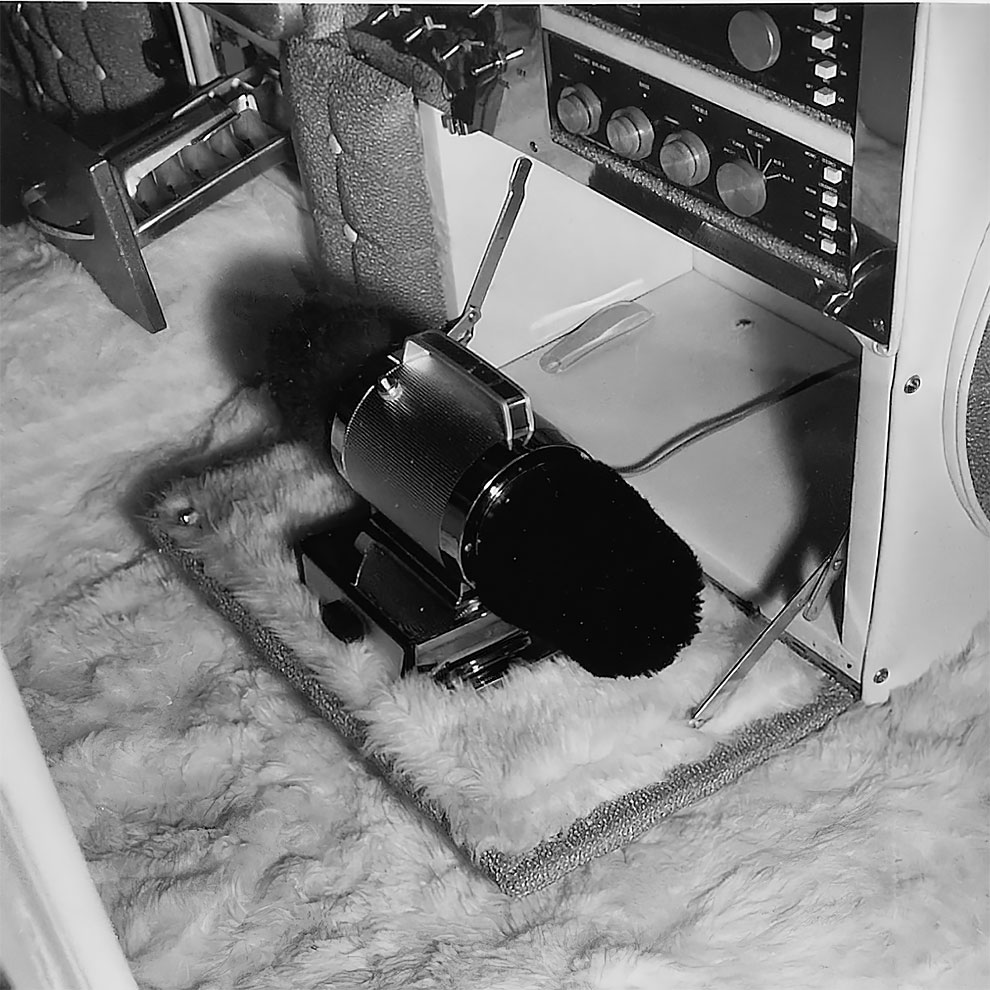

And finally, here is “The King” with some of his (rotating) travel companions. I’m sure that every trip was an enjoyable one in this massive vehicle.

Grilled Three-Cheese Bacon Sandwiches

Grilled cheese goes gourmet with this elevated take on the classic sandwich. Made with Gruyère, cheddar and American cheeses, this three-cheese grilled cheese sandwich with bacon takes a childhood favorite to new, delicious levels.
Ingredients
- 8 teaspoons mayonnaise
- 4 slices sourdough sandwich bread
- 2 slices deli sliced American cheese (2 oz)
- 4 slices cooked bacon
- 1/2 cup shredded sharp cheddar cheese (2 oz)
- 1/2 cup shredded Gruyère cheese (2 oz)



Dilbert

Uh Oh! Bank of England Says Top Banks “No Longer Too Big To Fail”
The Bank of England (BoE) said on Friday it was satisfied that Britain’s top banks could be shut down without putting at risk the stability of the financial system or disrupting customers . . . as it found “shortcomings” at three major lenders.
In its first public assessment of how failing lenders could be dismantled in a crisis without taxpayer handouts, the BoE said it had also identified “areas or further enhancement” for six firms.
The three banks found to have shortcomings were Lloyds, Standard Chartered, and HSBC. All three banks said in separate statements on Friday they were improving their so-called resolution plans.
The BoE is aiming to stop banks from being “too big to fail,” potentially requiring taxpayers to bail them out as happened in the 2007-09 global financial crisis.
The other lenders included in the review were Barclays, NatWest, Nationwide, Santander UK and Virgin Money UK.
The Bank of England said it would repeat its assessment in 2024 and review progress made by the lenders every two years after that.
Hal Turner Editorial Opinion
Sooooooo . . . BoE says their top banks are no longer “too Big to Fail.” OK. Who asked them?
I mean, who asked the BoE about this, that they issue a statement of this nature late on a Friday afternoon?
The mere existence of this public statement raised the hair on the the back of my neck.
It says to me . . . and it’s just my hunch . . . they know something gigantic is coming, and they’re already “setting the narrative” for when it hits.
The real problem is that the whole world is financially inter-connected. What happens in Beijing Affects London. What happens in London, affects New York. What happens in New York affects . . . . . everyone!
Whatever their motivation for issuing this statement today, we little guys need to pay close attention. In the end, it is us that gets the shaft.
Dilbert
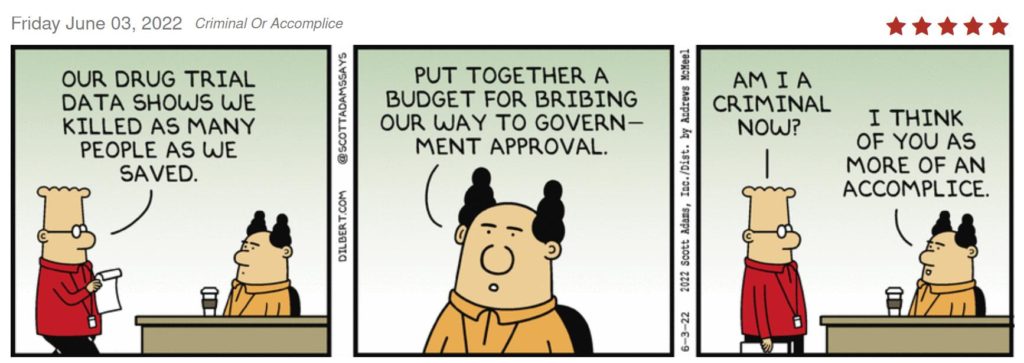
Kitten Can’t Let Go Of His Dead Father, Kneading Him Until He Wakes Up (Part 1) | Animal in Crisis
A very heartwarming story.
Defeating the oligarchs
Consortium News has an article by Chris Hedges about Seattle City Councilmember Kshama Sawant.
How to Defeat the Billionaire Class
Seattle City Councilmember Kshama Sawant and the Socialist Alternative (SA) party have, for nearly a decade, waged one of the most effective battles against the city’s moneyed elites. She and the SA have adopted a series of unorthodox methods to fight the ruling oligarchs and, in that confrontation, exposed the Democratic Party leadership as craven tools of the billionaire class. Her success is one that should be closely studied and replicated in city after city if we are to dismantle corporate tyranny.
Sawant, who lives on $40,000 of her $140,000 salary and places the rest into a political fund that she uses for social justice campaigns, helped lead the fight in 2014 that made Seattle the first major American city to mandate a $15 an hour minimum wage.
Following a three-year struggle against Jeff Bezos, one of the world’s richest men, she and her allies pushed through a tax on big business that increased city revenues by an estimated $231 million a year.
“The way to run a strong electoral campaign is to, as I said, completely reject personality politics, completely reject careerism, and build political organizations like Socialist Alternative. Except we need far bigger organizations where we can hold our elected representatives and other leaders in the organization accountable in the program of demands that we are fighting around. This becomes the central focus, not those individuals who could then use those positions to build their own careers by making themselves useful to the ruling class. That’s what we need to reject.”
Excellent reporting, and the piece emphasizes her stance that the Democratic Party is not an ally of the people. It also touches on other successful grassroots movements including the successful unionization of a Staten Island Amazon workplace, which won a $30 minimum wage and the right to work fulltime, which is a win against the common strategy to leave workers without healthcare and other benefits by classifying them as part time workers.
CIA reading your personal letters

In this “flaps and seals” kit for advanced users, tools handmade of ivory in a travel roll were used for the surreptitious opening of letters and packages during the 1960s. (Photo by Central Intelligence Agency)
Dilbert

The Death of the QUAD
This article informs us AUKUS was called out for its violations of the NPT. So, we have the Outlaw US Empire violating the Biological Weapons Treaty and the Non Proliferation Treaty along with its continual violations of the UN Charter.
“The three countries cannot repeatedly stick heads in the sand and must earnestly fulfill their legal obligations on non-proliferation. As a nonnuclear weapon state under the NPT, Australia must promptly and comprehensively declare its nuclear weapons materials and related facilities at all stages, Wang said, noting paper cannot wrap up fire.”
IMO, this isn’t a case of sticking heads in sand; rather, it’s a case of thumbing their noses to the entire world–Fuck You!! We’ll do whatever we want!! is the message as usual.
CIA in China

An essential part of the survival kit for American forces in the Philippines, China and Burma, this knife was ideal for cutting through jungle brush.
It also had potential as a combat knife – its manufacturer provided instructions on how to use the Woodsman’s Pal to defeat a Japanese soldier armed with a samurai sword. (Photo by Central Intelligence Agency)
Central Asia
Putin met today with the President of Turkmenistan, which some may not know is a declared Neutral Nation. For years, the Outlaw US Empire has tried to pry it away from its very longstanding close affiliation with Russia. Fortunately, its attempts have failed while relations between Russia and Turkmenistan continue to deepen. At the top of the transcript of their talks are links to the two sets of documents, the most important being the Declaration on Deepening the Strategic Partnership between the Russian Federation and Turkmenistan. Of greater interest is Putin’s statement to the press after their meeting. Putin’s opening remarks:
“This year is significant for Russian-Turkmen relations. April marked the 30th anniversary of the establishment of diplomatic ties, as well as the 20th anniversary of the signing of the fundamental Treaty between the Russian Federation and Turkmenistan on Friendship and Cooperation, which serves as a solid foundation for the entire complex of multifaceted interaction between our countries.
“The Declaration on Deepening Strategic Partnership, which we have just signed, sets out the priorities for joint work for the future in the political, trade, investment, cultural and humanitarian fields, and in the field of security, including biological and informational.”
IMO, Russia’s Central Asian “soft underside” is more secure than at anytime since 1991. Russia’s economic development is being shared with all Central Asian nations and also stimulated by China’s BRI.
CIA communications equipment

US Special Operations Forces in Afghanistan used the AN/PEQ-1A SOFLAM to direct exact delivery of ordnance. The SOFLAM was an important tool in the battle for Tora Bora where a CIA US Special Forces team directed 72 hours of unrelenting air strikes – sometimes dangerously close to their own position – killing hundreds of al Qa’ida terrorists. (Photo by Central Intelligence Agency)
World’s 1st Anti-Hypersonic System? China Says It Is Ready With An AI-Powered Defense Against Mach 5+ Missiles
While Beijing has repeatedly demonstrated its hypersonic offensive capabilities, it is now time for a ‘Chinese defense system’ against hypersonic missiles.
Chinese military researchers claim to have developed Artificial Intelligence (AI) technology that can predict the trajectory of a hypersonic glide missile as it approaches a target at speeds exceeding five times that of sound, South China Morning Post reported.
A rocket is used to launch a hypersonic glide vehicle to hit a target. The glide vehicle subsequently separates from the rocket and moves toward its target at a speed of at least Mach 5, or five times the speed of sound.
It is extremely difficult to track a hypersonic glide missile due to its unpredictable trajectory and the ability to enter space and re-enter the atmosphere in a very short period. Countries like the US are also relentlessly working on developing air missile defense against hypersonic missiles.

The Chinese researchers, however, seem to be several steps ahead of their American counterparts. According to them, a Chinese AI-powered air defense system can predict the potential kill trajectory of an incoming weapon and launch a swift counterattack with a three-minute advance time.
The typical missile stays within an 8-kilometer (5-mile) target zone, which is quite small for a weapon that can travel that distance in under two seconds.
“The world’s military powers are currently engaging in a fierce arms race around the development of hypersonic glide vehicles, bringing new and severe challenges to air and space safety,” said Zhang Junbiao, a computer scientist from the early warning intelligence department of the Air Force Early Warning Academy in Wuhan.

“Trajectory prediction is of great significance to combat intent assessment and aerospace defense interception,” wrote Zhang and his team in the Journal of Astronautics, a peer-reviewed publication run by the Chinese Society of Astronautics.
These Chinese claims come at the heel of a dedicated effort in the United States to build and test a hypersonic weapon system to match the capabilities of its adversaries, China and Russia.
Meanwhile, the US recently carried out a successful test of an Air-launched Rapid Response Weapon (ARRW) hypersonic missile, a few days after it had successfully tested its Hypersonic Air-Breathing Weapon Concept (HAWC).
Though efforts in the US are ongoing, there could be some time before a weapon is fielded. However, that has not deterred China’s quest to develop a defense against it in advance.
China, S.Korea defense chiefs agree to enhance exchanges, as a peaceful peninsula is in their interests
Should manage risks, overcome external noise and cooperate on regional security
How Does AI Defend Against Hypersonic Missile?
A hypersonic glide weapon, unlike a normal ballistic missile, may move through the atmosphere like a stone skipping across water and bank to the left or right, making it more difficult to detect and intercept, according to SCMP.
At Mach 5 or higher speed, there is little time for an air defense system to respond to the threat, and it is widely assumed that current technology will be unable to intercept a hypersonic glide missile.
Zhang, on the other hand, believes Artificial Intelligence is capable of handling such unpredictable tasks and develops a defense against an unpredictable trajectory and incredibly high speed.
The defending side normally has no idea about the mass, size, shape, aerodynamic control system, or purpose of hostile weapons, but by analyzing observed flight data, the AI may make a fairly accurate assumption. According to the researchers, every move a missile makes will give off some modest but useful signals about its design, capabilities, and mission, regardless of how advanced or fast it is.
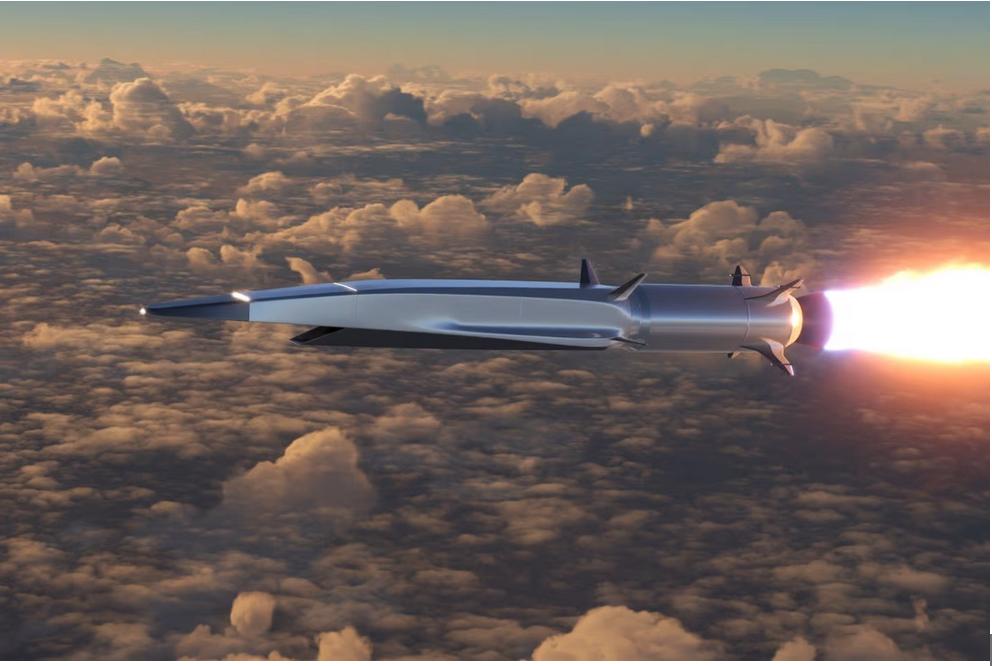
As a result, a machine learning system may learn from data collected during the early phases of a hypersonic flight and utilize that information to forecast the most likely trajectory during the flight’s later stages.
Zhang and his colleagues acknowledged that translating this idea into a working model was difficult. They claim that the raw data collected by an early warning system contains a lot of noise that might confuse AI and that too much data can also overload the computer.
To combat the problem of unwanted and overwhelming noise that could mislead the AI, the Chinese researchers devised a novel deep learning method that could automatically eliminate noise from observed signals. The algorithm similarly simulates the human brain’s activity by focusing just on the most recent, most important data to save calculation resources.
The new system can run on a laptop computer and produce a result in 15 seconds, according to the study, despite being more advanced than any previous AI for hypersonic trajectory prediction. Simulated experiments indicated that the system is still effective against a wide spectrum of weapons traveling at up to Mach 12 speeds.
Earlier in March, China’s Aerospace Defense industry had claimed that Beijing had made significant progress in building an AI (artificial intelligence) system that could even design new hypersonic weapons autonomously.
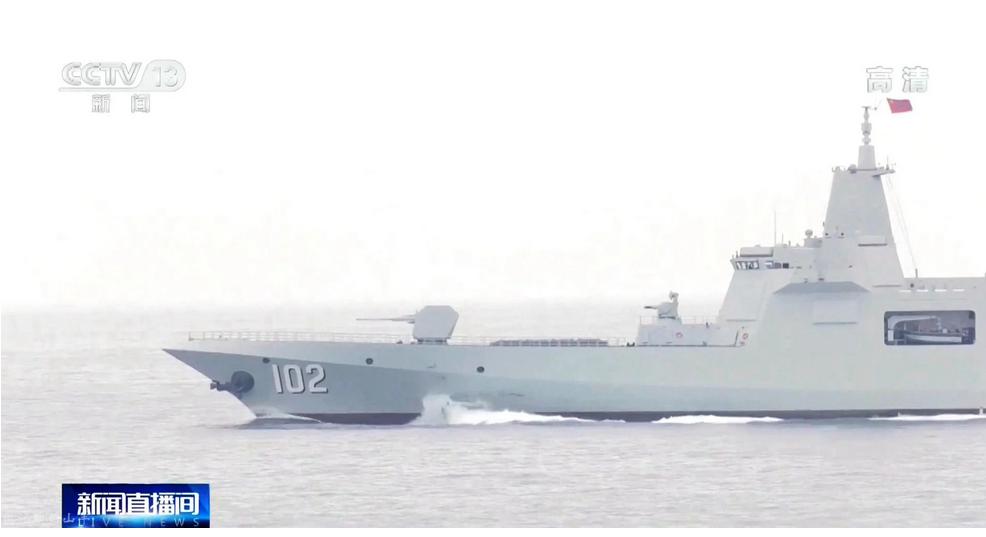
CIA doing “fishy things”

CIA’s Office of Advanced Technologies and Programs developed the Unmanned Underwater Vehicle (UUV) fish to study aquatic robot technology. The UUV fish contains a pressure hull, ballast system, and communications system in the body and a propulsion system in the tail. It is controlled by a wireless line-of-sight radio handset. (Photo by Central Intelligence Agency)
Double Whammy For The US?
As tensions continue to rise between the US and China in the Indo-Pacific region with an aggressive Beijing practicing dangerous military maneuvers, policymakers and military are alive to the challenges posed by the Chinese hypersonic missiles.
The US is currently reworking the defenses of its strategic assets in the Indo-Pacific against a Chinese offense. The EurAsian Times recently reported how the US was putting in place a dedicated layered missile defense system in Guam to protect its territory and valuable military assets against Chinese missile strikes in the event of hostility.
Chinese Researchers had earlier claimed that its hypersonic missile with advanced infrared homing capability would allow it to hunt down a stealth fighter like the F-22 and even a moving car on the street with precision.
Therefore, these advanced would be able to destroy a target in an adversarial country over super long distances with absolute precision.
If the Chinese claims are anything to go by, it’s double trouble for the US, which lags far behind China in the hypersonic weapons race. As of now, the US neither has an operational hypersonic missile nor a workable defense against hypersonic missiles.
China, on the other hand, claims that it has both!
Stunning and Rare Images of The 1935 Adler Diplomat 8 Wheels

The Adler Diplomat is a substantial six-cylinder “limousine” built by the Frankfurt auto-maker, Adler. It was introduced in March 1934 as a direct replacement for the manufacturer’s Standard 6. Less directly the six-cylinder Diplomat also replaced the Adler Standard 8 since Adler’s large eight-cylinder car was discontinued in 1934 without a direct replacement of its own.
The Diplomat initially, in 1934, took over the body from the previous year’s Adler Standard 6. However, the Standard Six had received an all new body for its final year of production, and for keen eyed observers the final year’s Standard Six was differentiated from the first year’s Diplomat by redesigned fender aprons. The chassis which had been a defining feature of the 1933 Standard 6 had been of an underslung design whereby the axles emerged directly above the principal chassis members: this allowed for a lower centre of gravity and a lower-bodied car than the overslung chassis, with axles mounted directly below the chassis, which had left the earlier Standard Six looking unfashionably high-bodied in the early 1930s.
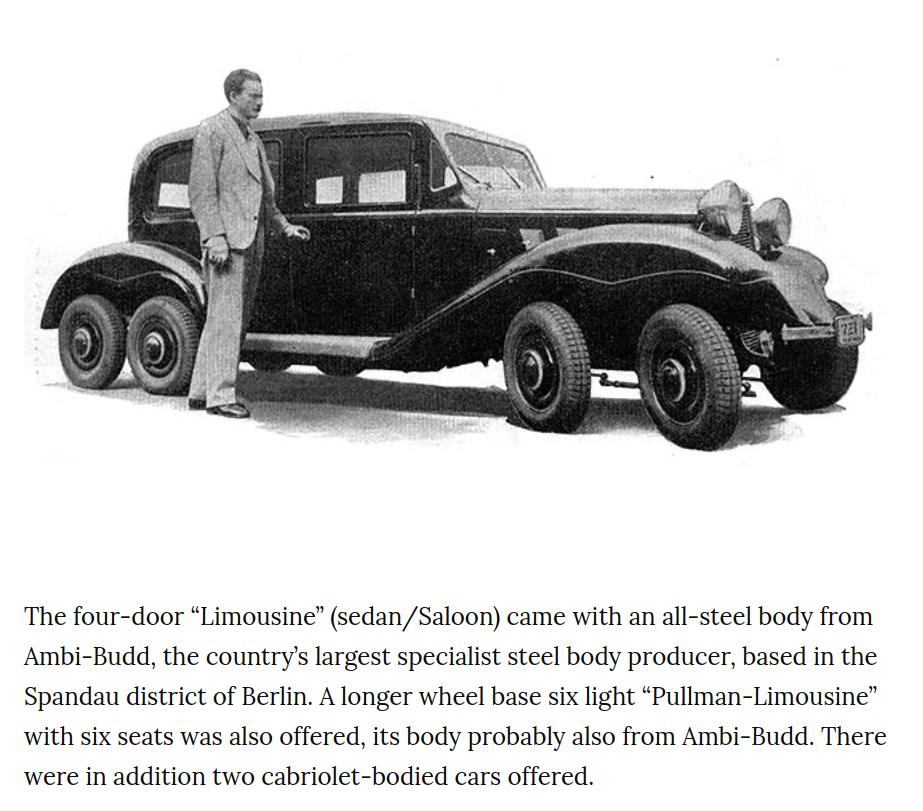
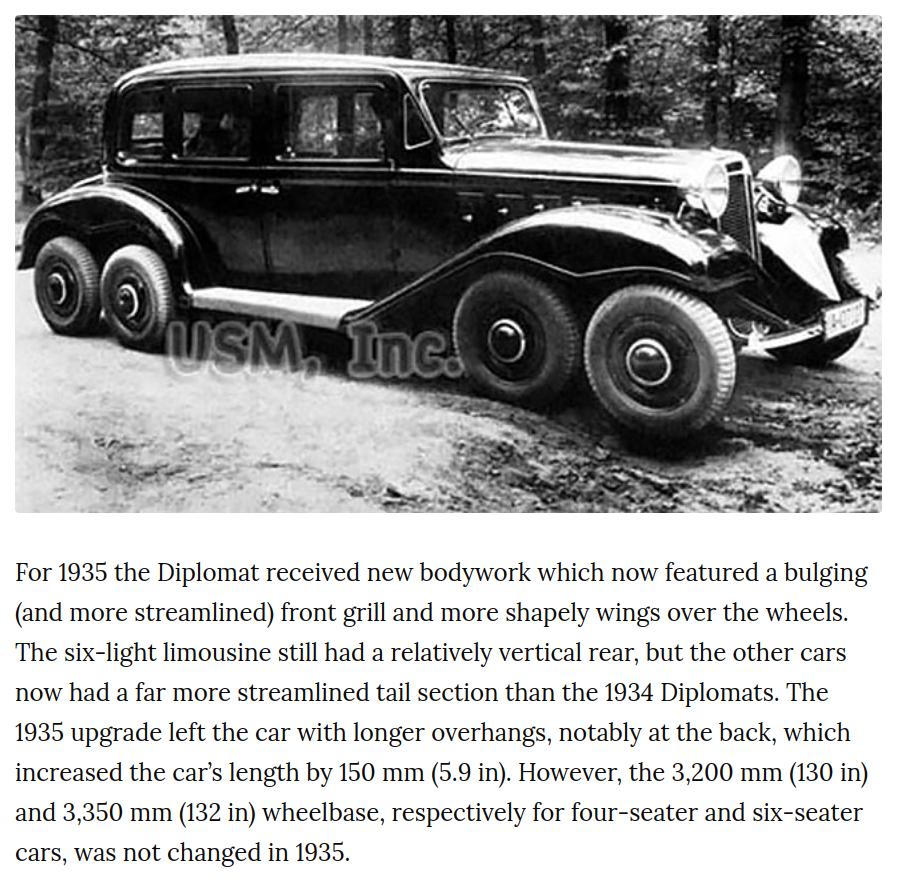
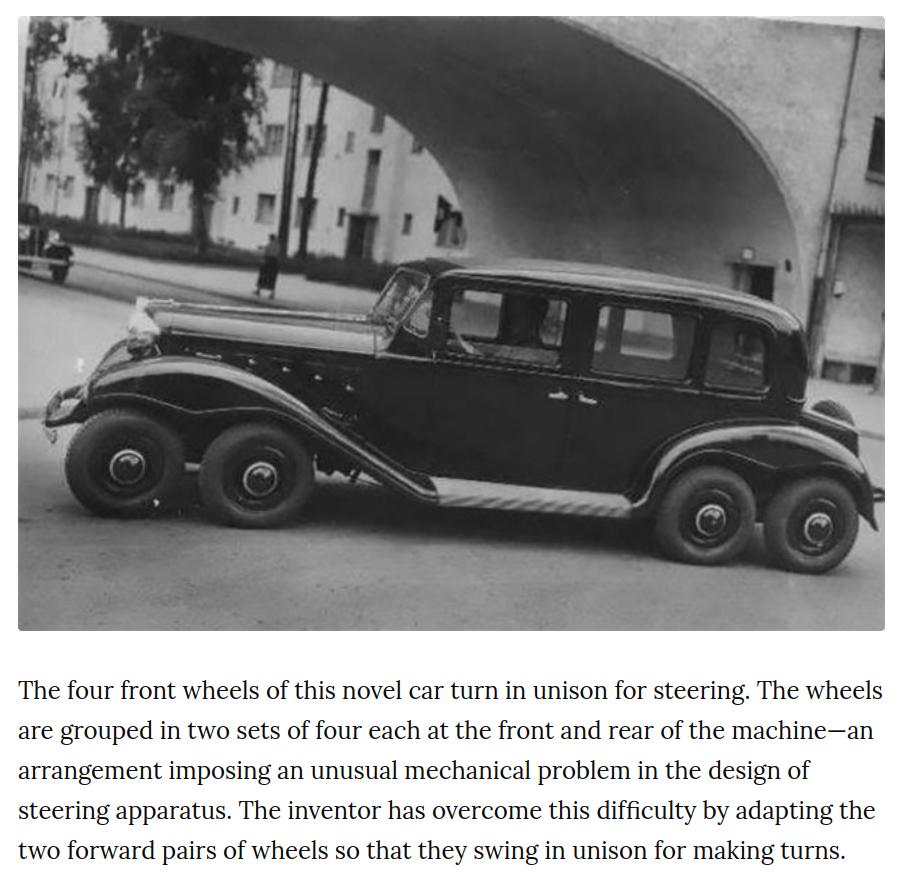
‘The State is no longer working to serve us and to protect our shared heritage’: Neil Oliver
A very great video. It’s most certainly worth a view.
More pictures from the past…










American CIA in Taiwan

CAT travelers received flight bags as complementary gifts. Once a Chinese Nationalists Airline, was owned by the CIA for covert operations. (Photo by Central Intelligence Agency)
Americans Will Never Forget The Historic Economic Collapse During Joe Biden’s Presidency
We have faced a lot of significant challenges in modern American history, but nobody will ever forget the economic horror that is breaking loose during Joe Biden’s time in the White House. For years, we were warned that the policies that our leaders were pursuing would destroy the value of our currency and unleash rampant inflation. Now it has happened. For years, we were warned of a looming global energy crisis that would inevitably hit us. Now it is here. But what we have been through already is just the beginning. The shortages that we are experiencing now will get worse. Many of the ridiculously high prices that we are seeing now will seem like bargains by the end of the year. And right now the U.S. economy appears to be rapidly slowing down at the exact same moment that economies all over the globe are moving in the wrong direction. The CEO of Goldman Sachs just told us that “there’s going to be tougher economic times ahead”, and he is not exaggerating one bit.
On Thursday, the average price of a gallon of gasoline in the United States reached yet another brand new all-time record high…
US gas prices have hit a new high of $4.71, just a day after hitting the record as seven states top off at $5 a gallon as inflation soars. The national average jumped four cents overnight, leaving drivers in even more despair as gas prices continue to skyrocket emptying their wallets.
If Americans don’t like paying about five bucks a gallon, how are they going to feel when it takes about 10 bucks to buy a gallon of gas?
Fortunately, we did just get a bit of good news that should provide some temporary relief…
OPEC and its oil-producing allies agreed on Thursday to hike output in July and August by a larger-than-expected amount as Russia’s invasion of Ukraine wreaks havoc on global energy markets. OPEC+ will increase production by 648,000 barrels per day in both July and August, bringing forward the end of the historic output cuts OPEC+ implemented during the throes of the Covid pandemic.
Unfortunately, this isn’t really going to change the trajectory of where we are heading.
In fact, one energy expert says that this is essentially just a symbolic gesture…
Robert McNally, president of Rapidan Energy Group and a former energy adviser to President George W. Bush, said prices rallied Thursday because the OPEC move was “more symbolic than fundamentally significant.” “I wouldn’t call it a drop in the bucket. It’s basically a gesture… an important one symbolically,” he told CNN Business.
What we really need are long-term solutions, and there aren’t any on the horizon.
And the truth is that we aren’t just facing an oil crisis. At this stage, the balance between supply and demand has reached a crisis point for all traditional forms of energy simultaneously…
“Now we have an oil crisis, a gas crisis and an electricity crisis at the same time,” Fatih Birol, head of the International Energy Agency watchdog group, told Der Spiegel in an interview published this week. “This energy crisis is much bigger than the oil crises of the 1970s and 1980s. And it will probably last longer.” The global economy has largely been able to withstand surging energy prices so far. But prices could continue to rise to unsustainable levels as Europe attempts to wean itself off Russian oil and, potentially, gas. Supply shortages could lead to some difficult choices in Europe, including rationing.
What do you think the European economy will look like when there is widespread rationing of natural gas six months from now?
Can anyone out there answer that question?
We have never faced anything like this before, and one industry insider is referring to this as a “perfect storm”…
Joe McMonigle, secretary general of the International Energy Forum, said he agrees with this depressing forecast from the IEA. “We have a serious problem around the world that I think policymakers are just waking up to. It’s kind of a perfect storm,” McMonigle, whose group serves as a go-between for energy producing and consuming nations, told CNN in a phone interview.
Isn’t it funny how that term keeps popping up?
For years, I warned that a “perfect storm” was coming over and over again, and now that term has constantly been in the news throughout this year.
Another element of the “perfect storm” that we are facing is the rapidly growing global food crisis.
Here in the United States, the bird flu pandemic that has erupted in 2022 has resulted in 38 million chickens and turkeys being wiped out.
As a consequence, the price of eggs has been soaring to unprecedented levels…
The price of eggs increased 10.3% in April. The UDSA predicts an increase between 19.5% and 20.5% year over year in 2022. That could mean $1.00 an egg. Poultry prices will rise as much as 9.5%.
Did you ever imagine that you would be paying a dollar for a single egg?
I still remember when you could get an entire carton of eggs for one dollar.
Chicken meat and turkey meat will be getting more expensive too, and now we are being warned that shortages are coming.
In fact, the CEO of Hormel Foods is openly telling us that “large supply gaps in the Jennie-O Turkey Store will begin in the third quarter”…
A top US food processing company warned of an upcoming shortage of its turkey products at supermarkets following one of the worst bird flu outbreaks. “Our Jennie-O Turkey Store team is facing an uncertain period ahead,” Hormel Foods Corporation CEO Jim Snee told investors in an earnings call. “Similar to what we experienced in 2015, (avian influenza) is expected to have a meaningful impact on poultry supplies over the coming months.” Snee said the “large supply gaps in the Jennie-O Turkey Store will begin in the third quarter.” He said highly pathogenic avian influenza was confirmed in “our supply chain” in March.
In case you didn’t get the point of what he was saying, “large supply gaps” is a politically correct way of saying “widespread shortages”.
Speaking of shortages, the baby formula shortage in the United States is now worse than ever…
But, as Bloomberg reports, out-of-stock rates climbed to 74% nationally for the week ending May 28, according to data on 130,000 stores followed by Datasembly. The increase comes after rates spiked to 70% for the week ending May 21 from 45% the week prior. Even more stunningly, ten states now have shortage rates at 90% or greater, with Georgia hardest hit at 94%.
The Biden administration made a really big deal out of the fact that they were flying in baby formula from Europe, but once again that turned out to mostly be a symbolic gesture.
As economic conditions continue to deteriorate, an increasing number of Americans will fall into poverty and hunger. In fact, according to NPR “demand at food banks is way up again”, and many of those food banks are already at a crisis point…
Fitzgerald, of Feeding America, says providers around the country are dipping into emergency reserves, switching to cheaper products, limiting how often people can visit or how much food they can get, and “stretching their inventory to be able to meet more people’s needs.”
If our food banks are in such distress now, what will things be like six months or a year from today?
Because the truth is that food supplies are only going to get tighter.
The winter wheat harvest in the U.S. is going to come in way, way below original expectations. In fact, we are being told that the winter wheat harvest in Kansas could be down “by more than 25%”…
The U.S. winter wheat harvest potential in Kansas has dipped by more than 25% because of severe drought, and farmers in the state may leave thousands of acres of wheat in fields this year instead of paying to harvest the grain hit by the dry winter.
Looking ahead, a lot less wheat is being planted for the coming growing season because of extremely bizarre weather patterns in some areas.
For example, the amount of wheat that is currently being planted in North Dakota is expected to be the smallest ever recorded…
Some farmers in North Dakota are unable to plant as much wheat as they normally would because of heavy rain across the state. Government data shows the state is expected to plant wheat over the smallest recorded share of its farmland.
For much more on why U.S. food production is going to continue to shrink in the months ahead, please see this article.
The bottom line is that we are facing really severe problems that are not going to go away any time soon.
And if you are waiting for Joe Biden to come to the rescue, you are going to be waiting for a very long time…
The president of the United States says he understands that inflation is impacting family budgets. But on Wednesday, he said he’s not “aware” of any “immediate action” that would reduce food and fuel prices. “[W]e can’t take immediate action, that I’m aware of yet, to figure out how we bring down the price of gasoline back to three dollars a gallon. And we can’t do that immediately with regard to food prices, either,” Biden said.
A historic economic nightmare is here, and the guy in the White House is all out of answers.
So buckle up and try to enjoy the ride.
The months ahead are going to be quite chaotic, and you probably don’t even want to think about what is coming after that.
The illegal transfer of nuclear weapons materials involved in AUKUS cannot be denied: Chinese envoy
CIA in Laos

Keith Woodcock, 2008, Oil on Canvas, Donated Courtesy of the Air America Association Board.
When President Kennedy decided in 1961 to forcefully resist rising Communist aggression against the remote but strategically located Kingdom of Laos, the CIA – and its proprietary airline Air America – were ready.
Flying in a mountainous land-locked country with few roads, continually shifting weather conditions, and virtually no navigational aids, Air America crews routinely conducted hazardous resupply missions to hundreds of government outposts.
This aerial lifeline provided essential assistance to Royal Lao and US-directed forces battling North Vietnamese and Pathet Lao Communist troops. (Photo by Central Intelligence Agency)
Showing ‘not hesitant to fight’ attitude helps peace across Taiwan Straits: Global Times editorial
CIA in Vietnam / Cambodia

CIA technicians invented and used this unusual device in the 1960s to keep track of the enemy in Southeast Asia.
The mission was to count people and supplies moving down the Ho Chi Minh Trail from North Vietnam to South Vietnam along the borders of Laos and Cambodia.
Many of the Laotian trail watchers whom CIA recruited could not read or write, let alone understand English. And so the device featured “pictograms,” such as symbols representing troops, trucks, motorcycles, carts, bicycles, tanks, cannons, small artillery, missiles, donkeys, and yes, occasionally elephants, a common beast of burden in Laos.
Alongside each pictogram was a knob that could be set to a number, and then the data could be transmitted to an airplane by activating a toggle switch. (Photo by Central Intelligence Agency)
GT Voice: Why do Chinese prices remain stable amid global inflation?
Yeah. My food and gas prices inside of China hasn't bulged at all. The stories about inflation in the West seen so odd =, strange and far away. -MM
The SOS Band Live Studio A5621
Wow! They got so much better as they aged. They all look great, and their sound takes me back to the early 1980’s. Just an awesome experience!
Do you want more?
You can find more articles related to this in my latest index; A New Beginning. And in it are elements of the old, some elements regarding the transition, and some elements that look towards the future.
New Beginnings 4.
Articles & Links
Master Index.
- You can start reading the articles by going HERE.
- You can visit the Index Page HERE to explore by article subject.
- You can also ask the author some questions. You can go HERE to find out how to go about this.
- You can find out more about the author HERE.
- If you have concerns or complaints, you can go HERE.
- If you want to make a donation, you can go HERE.
.



